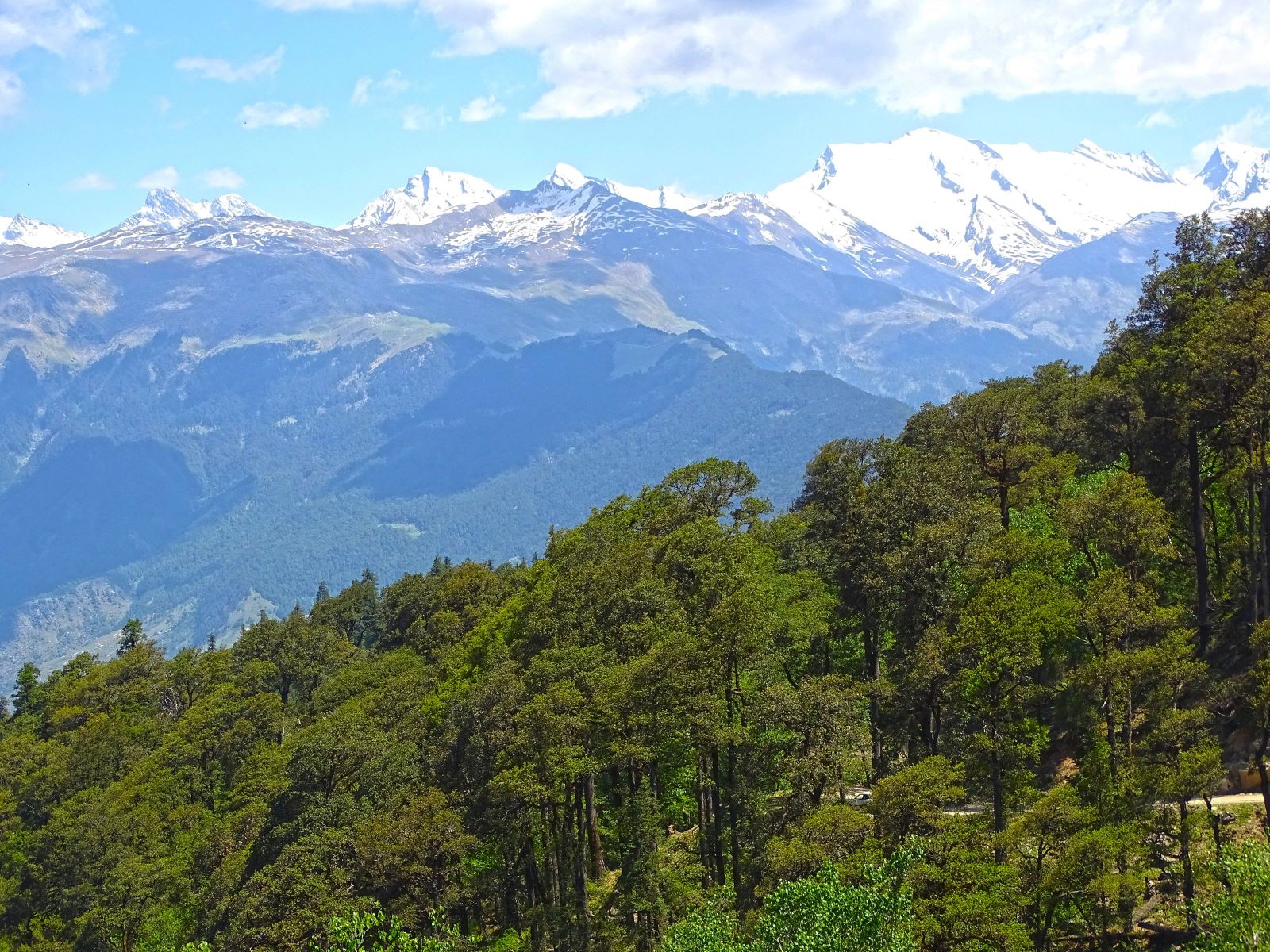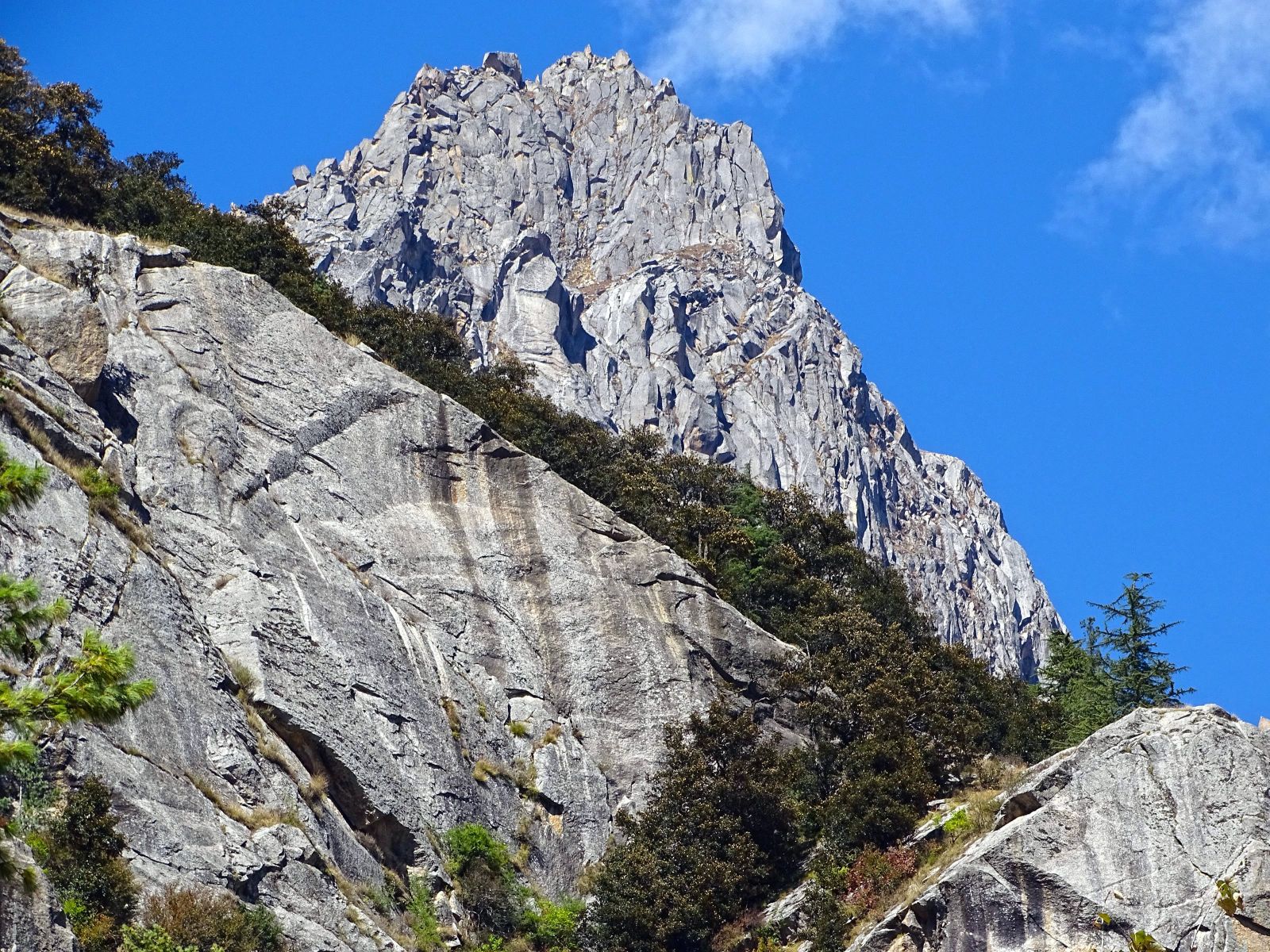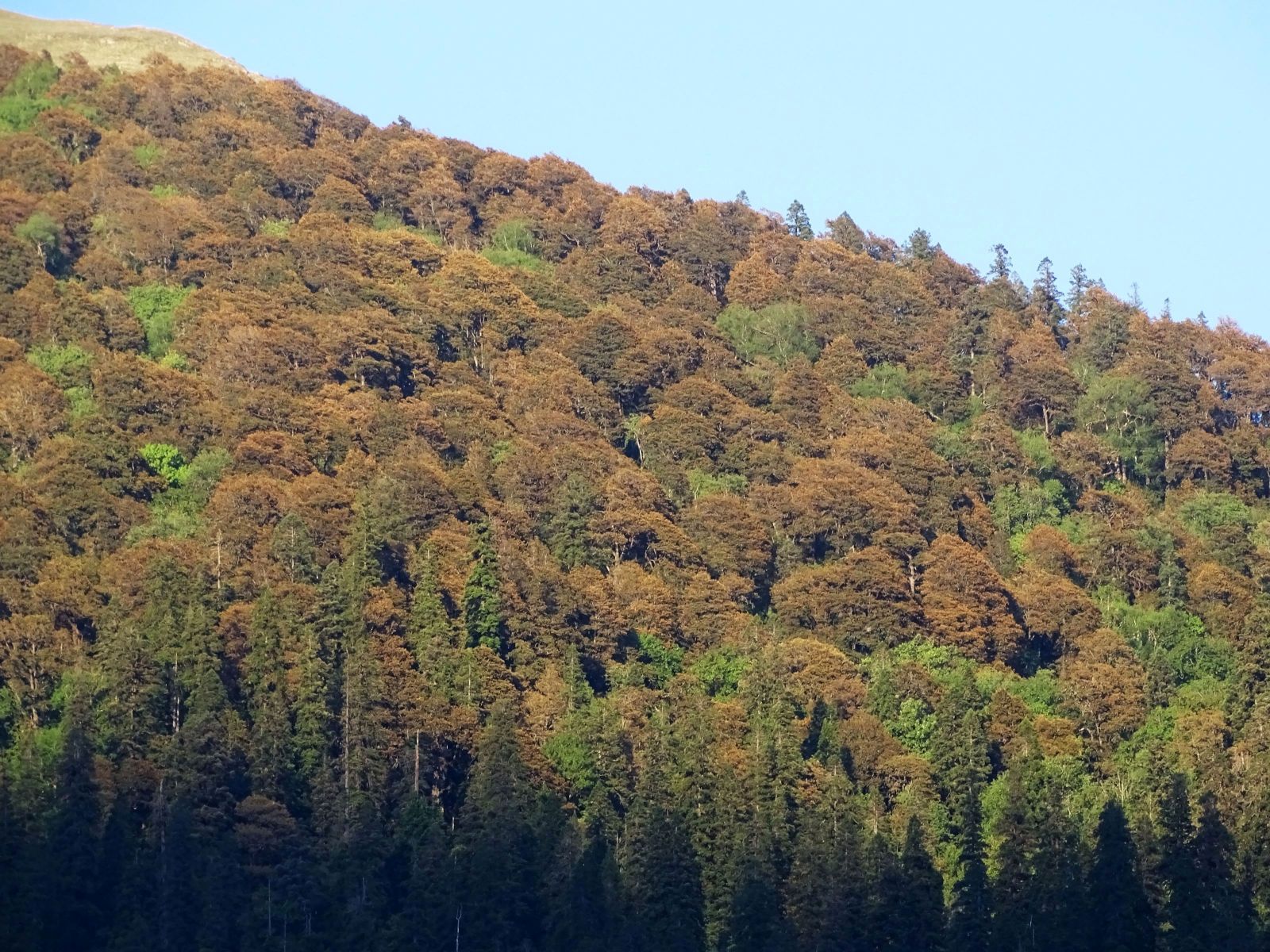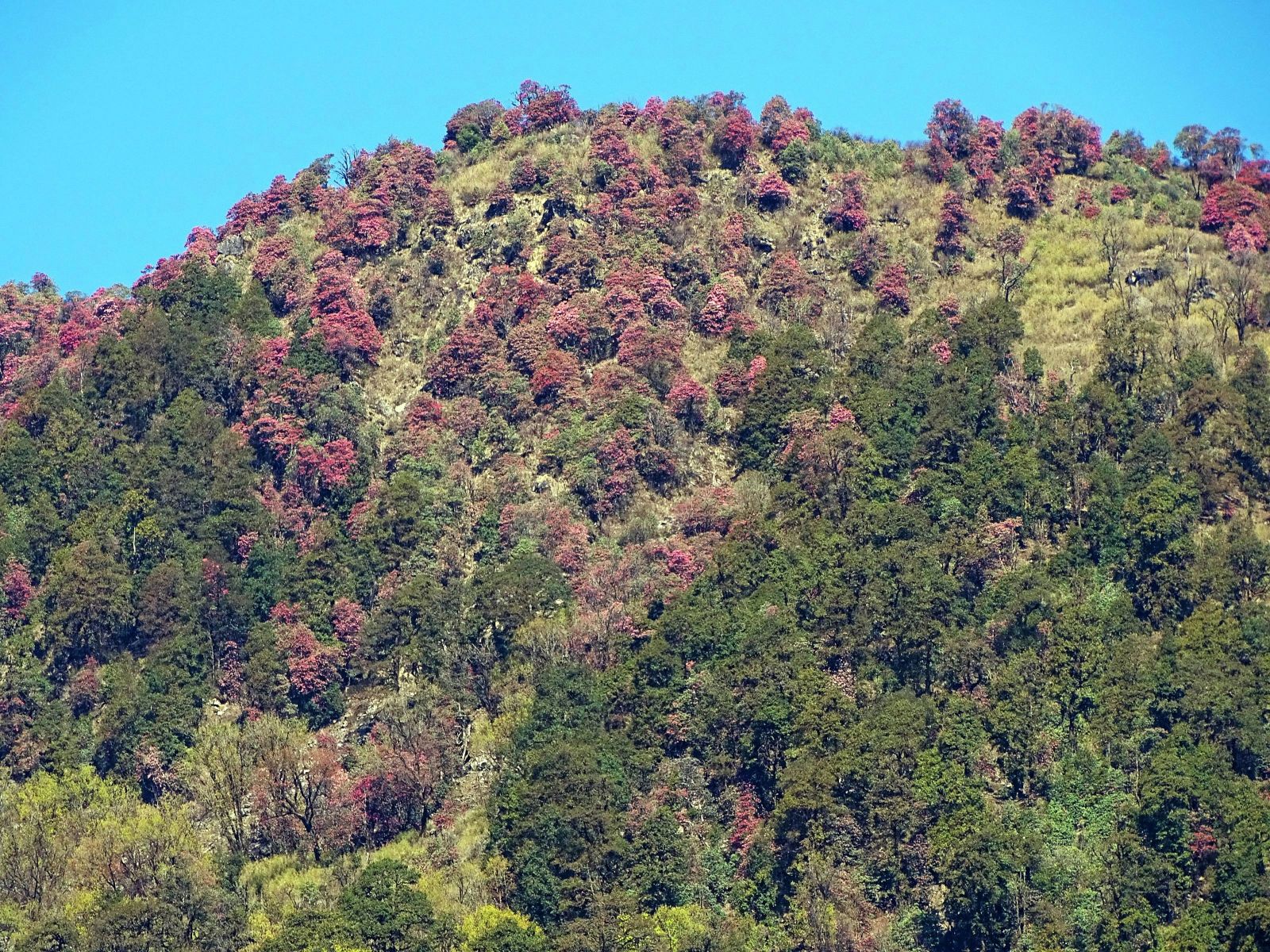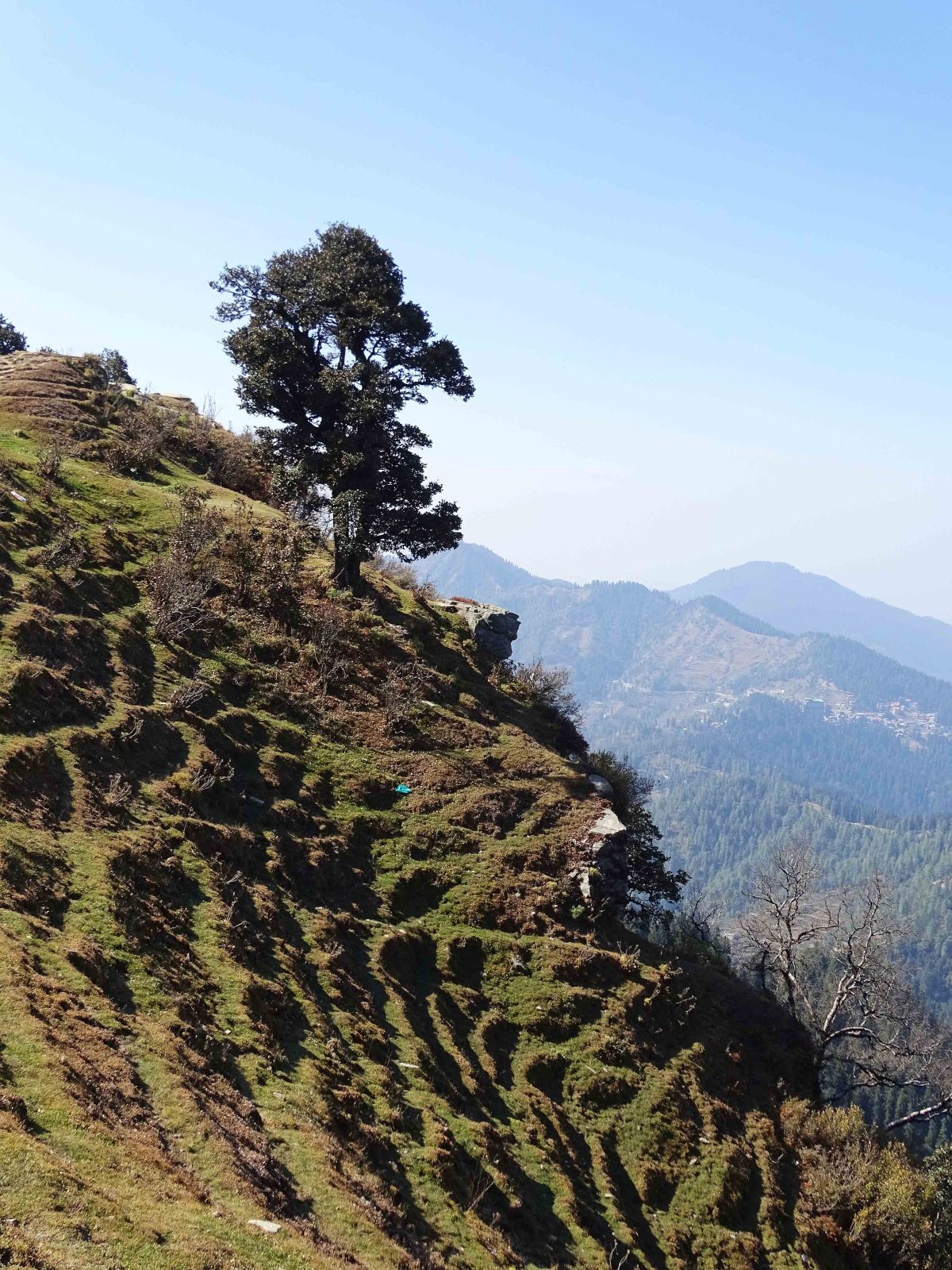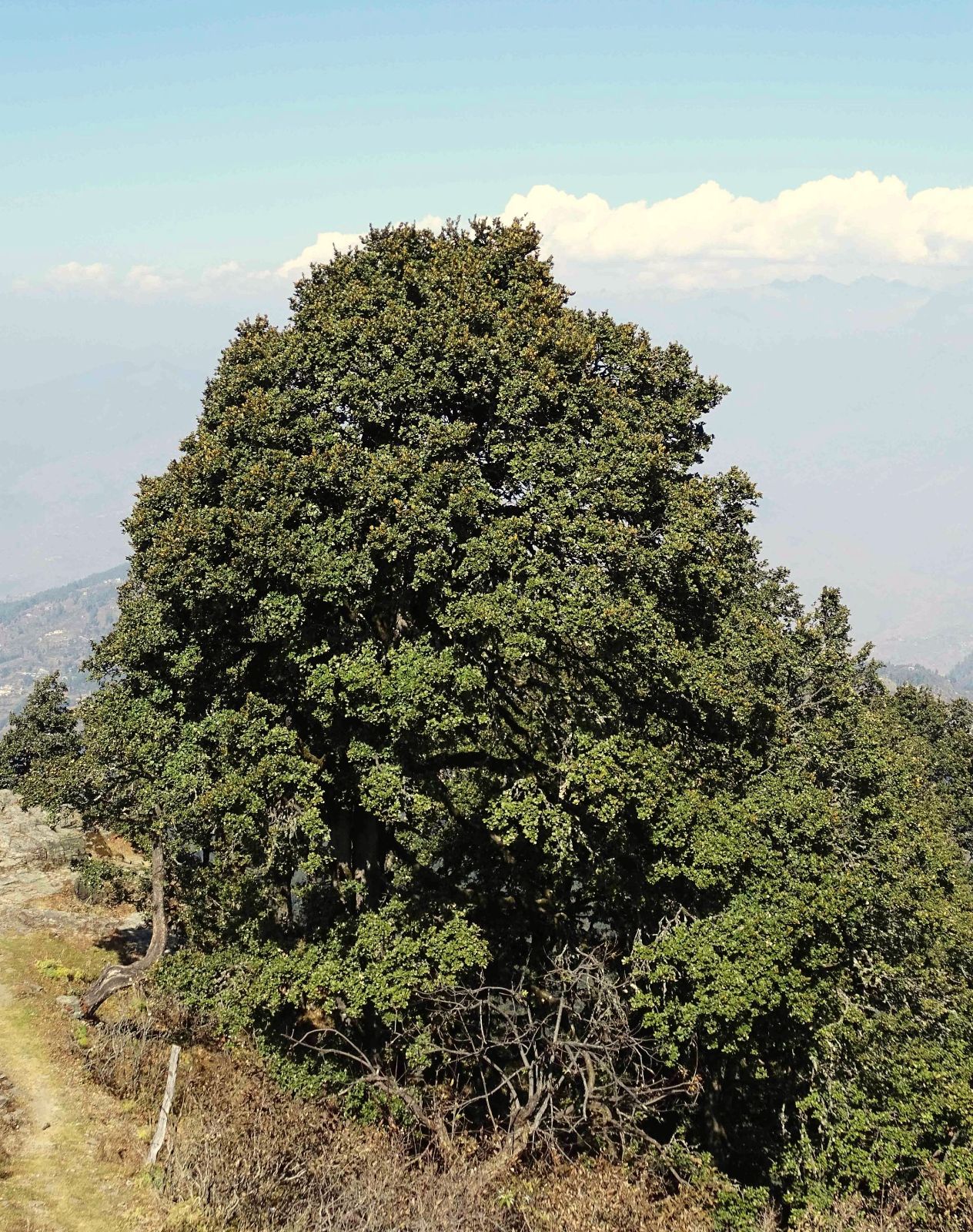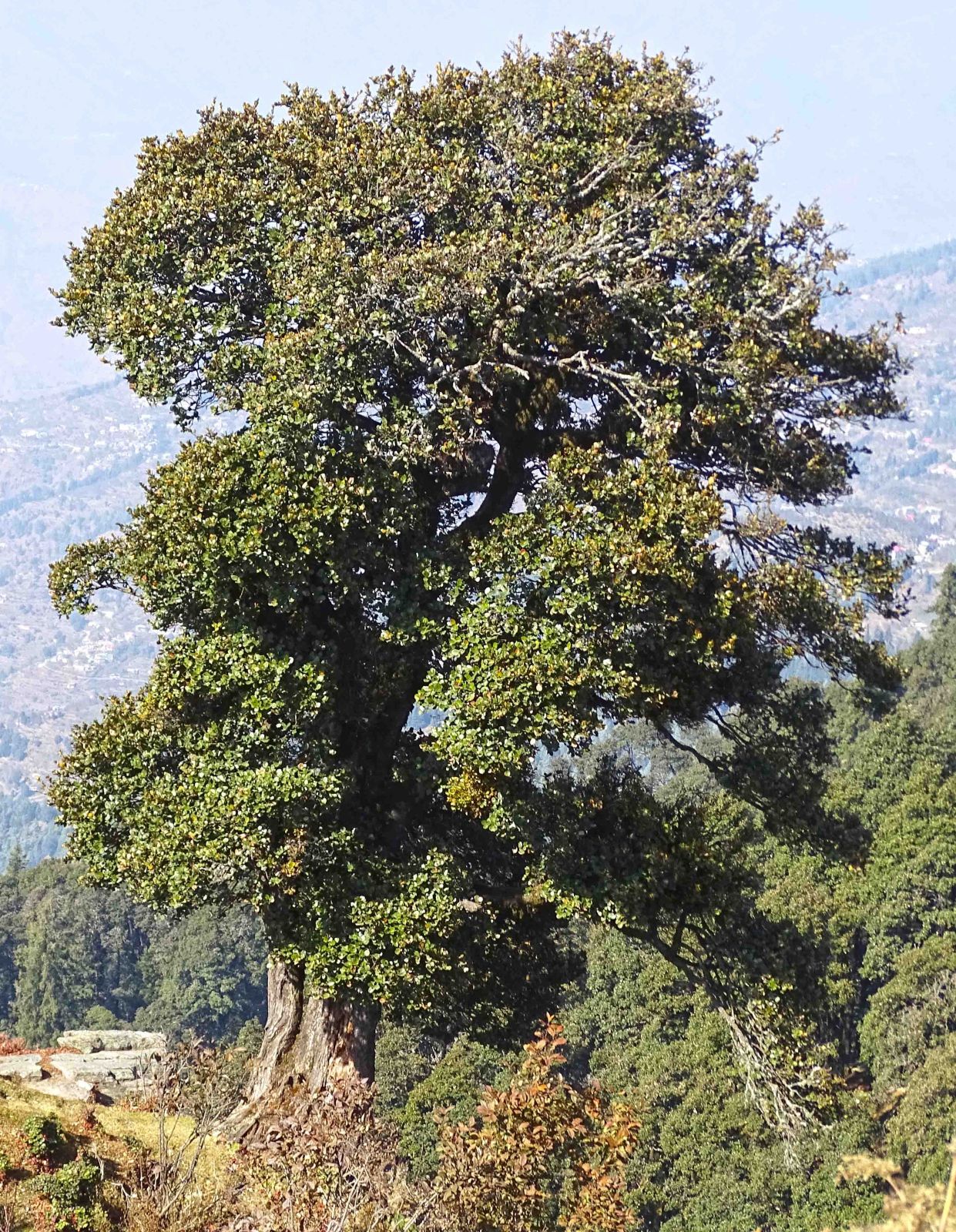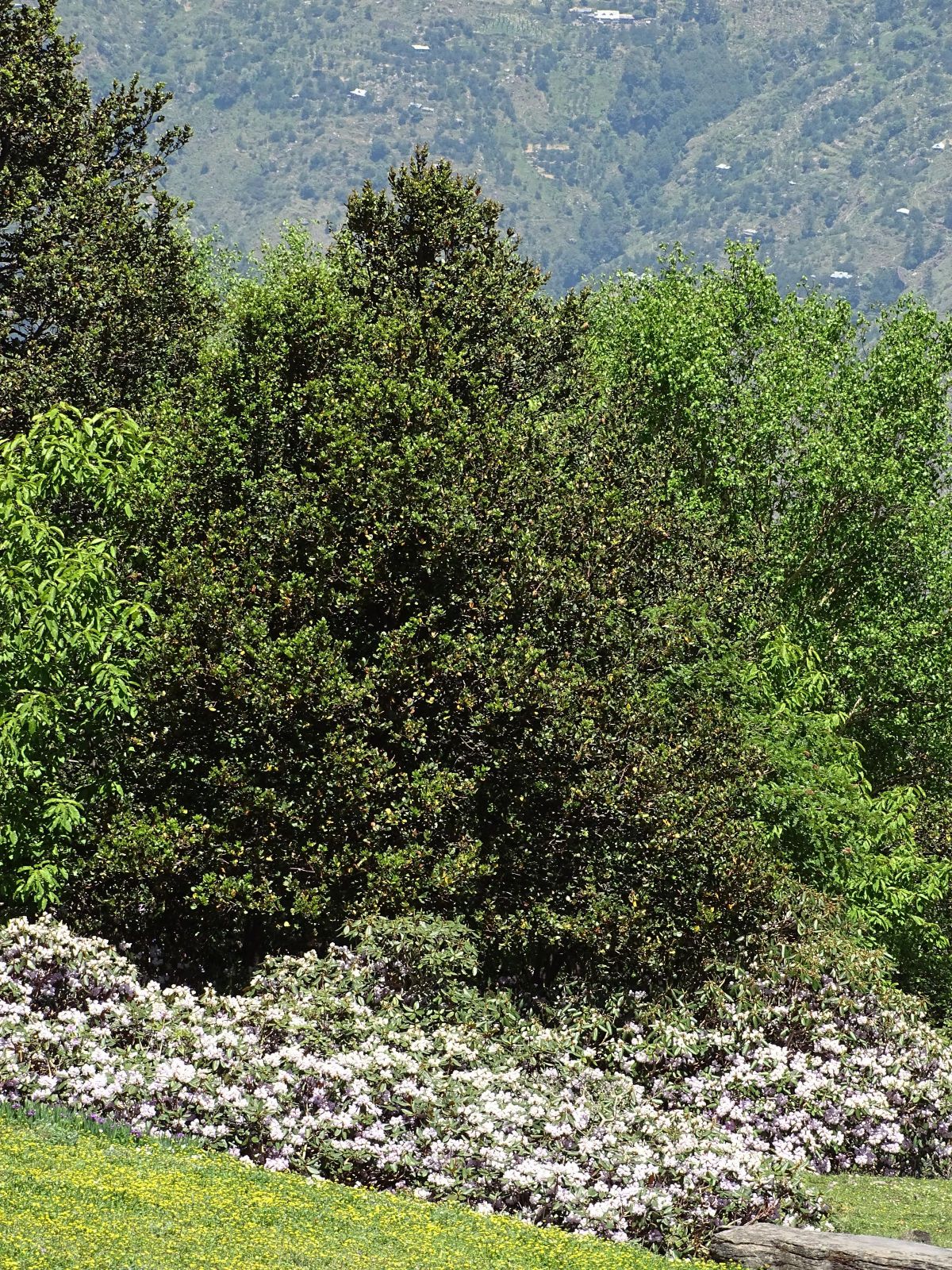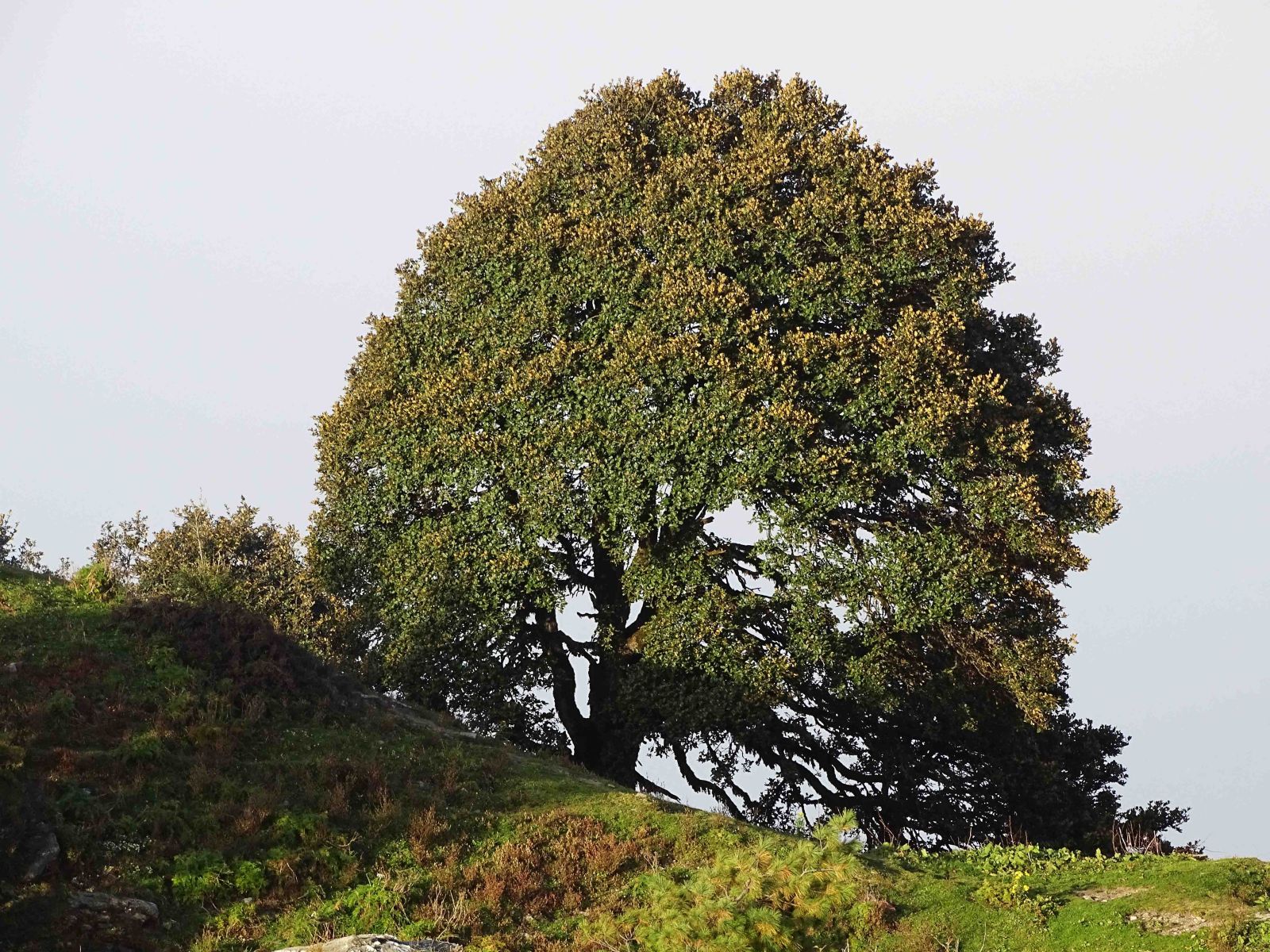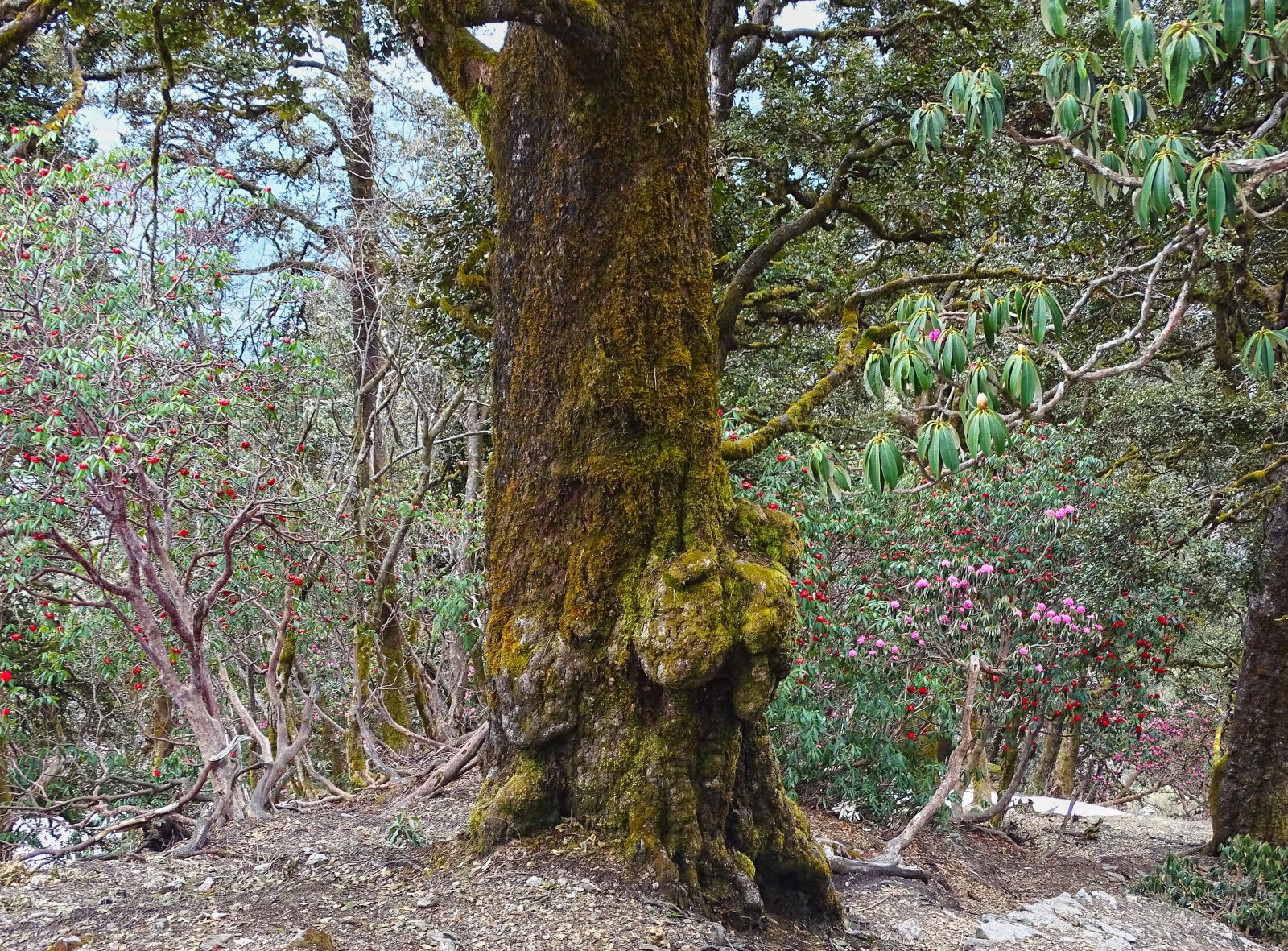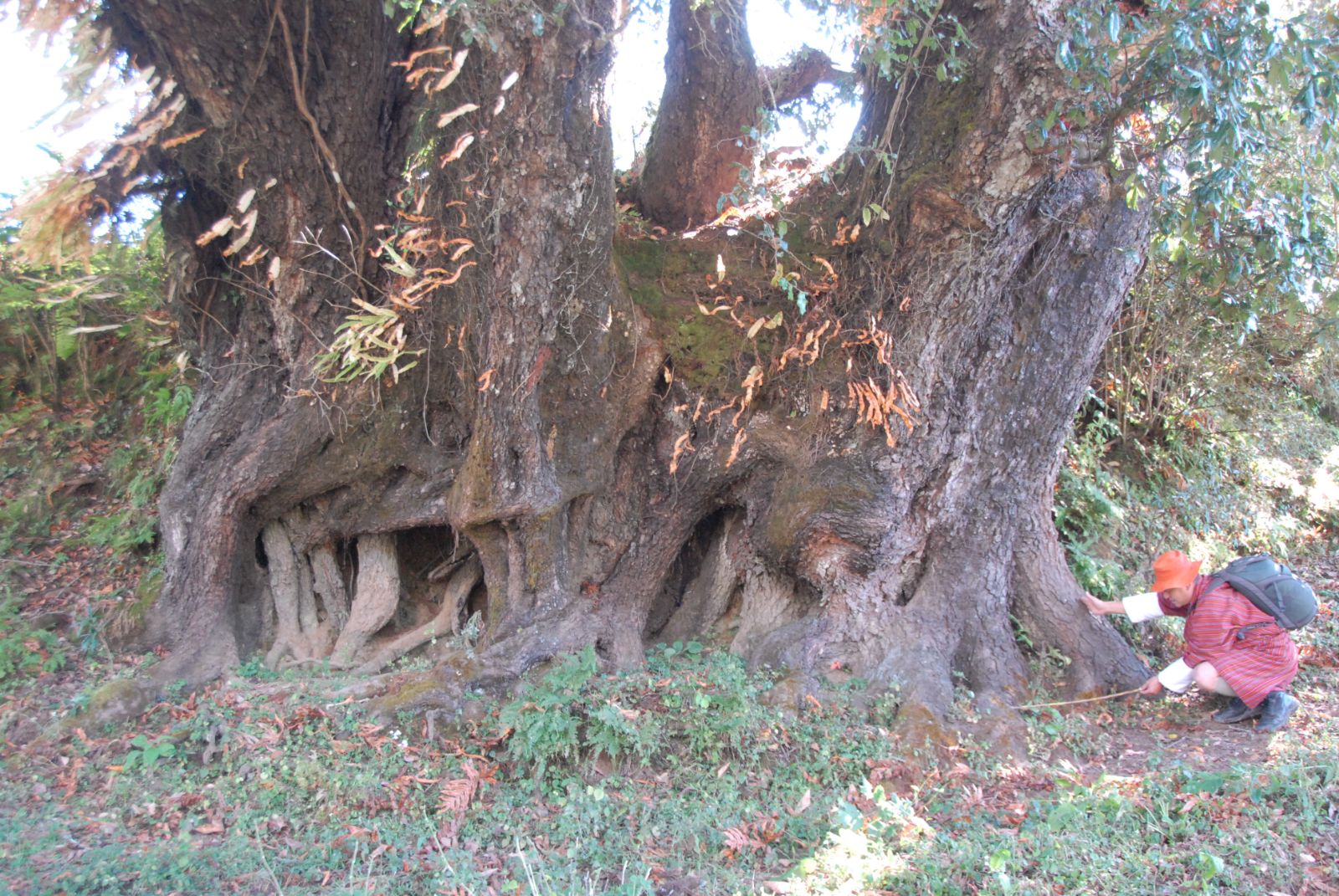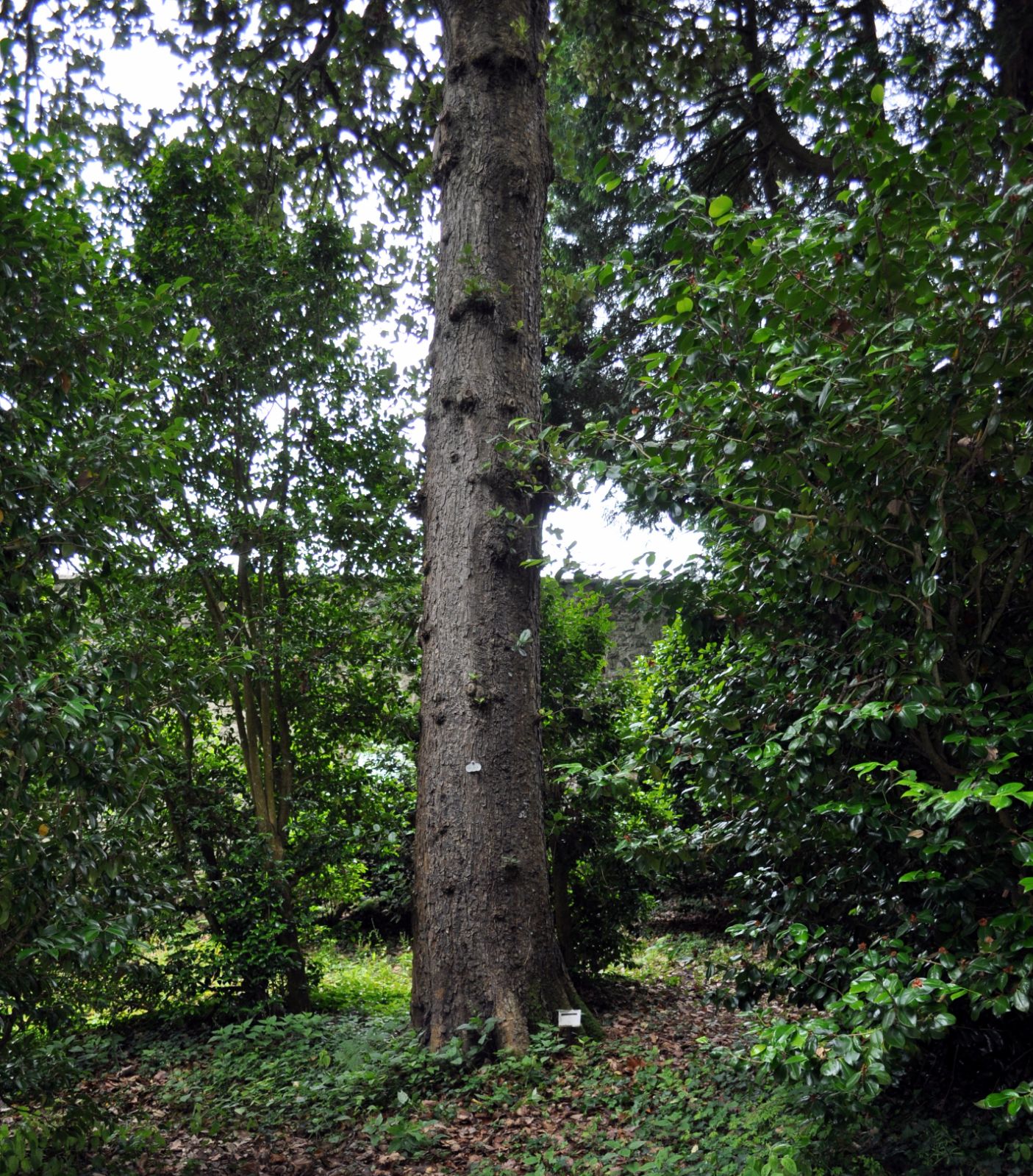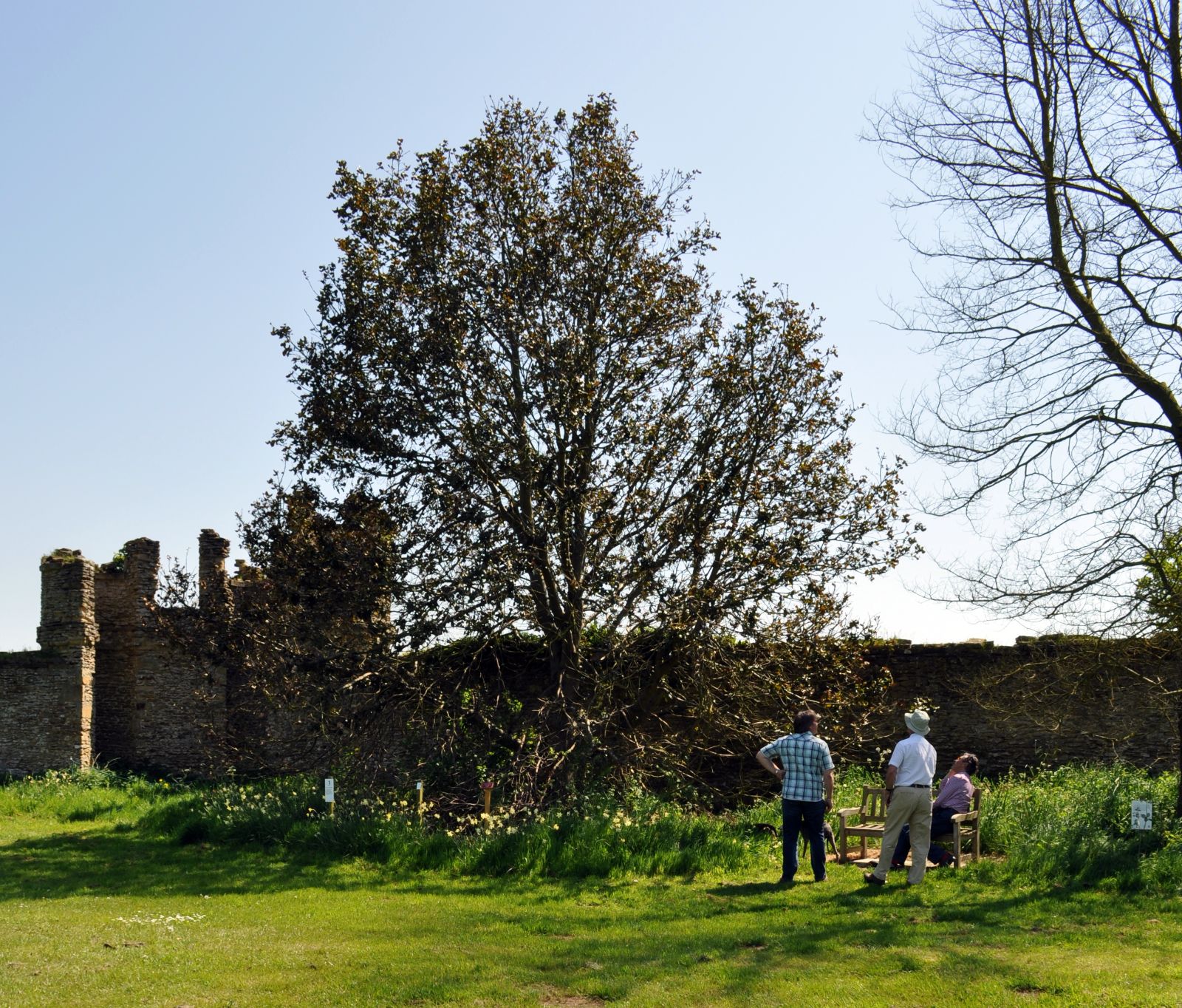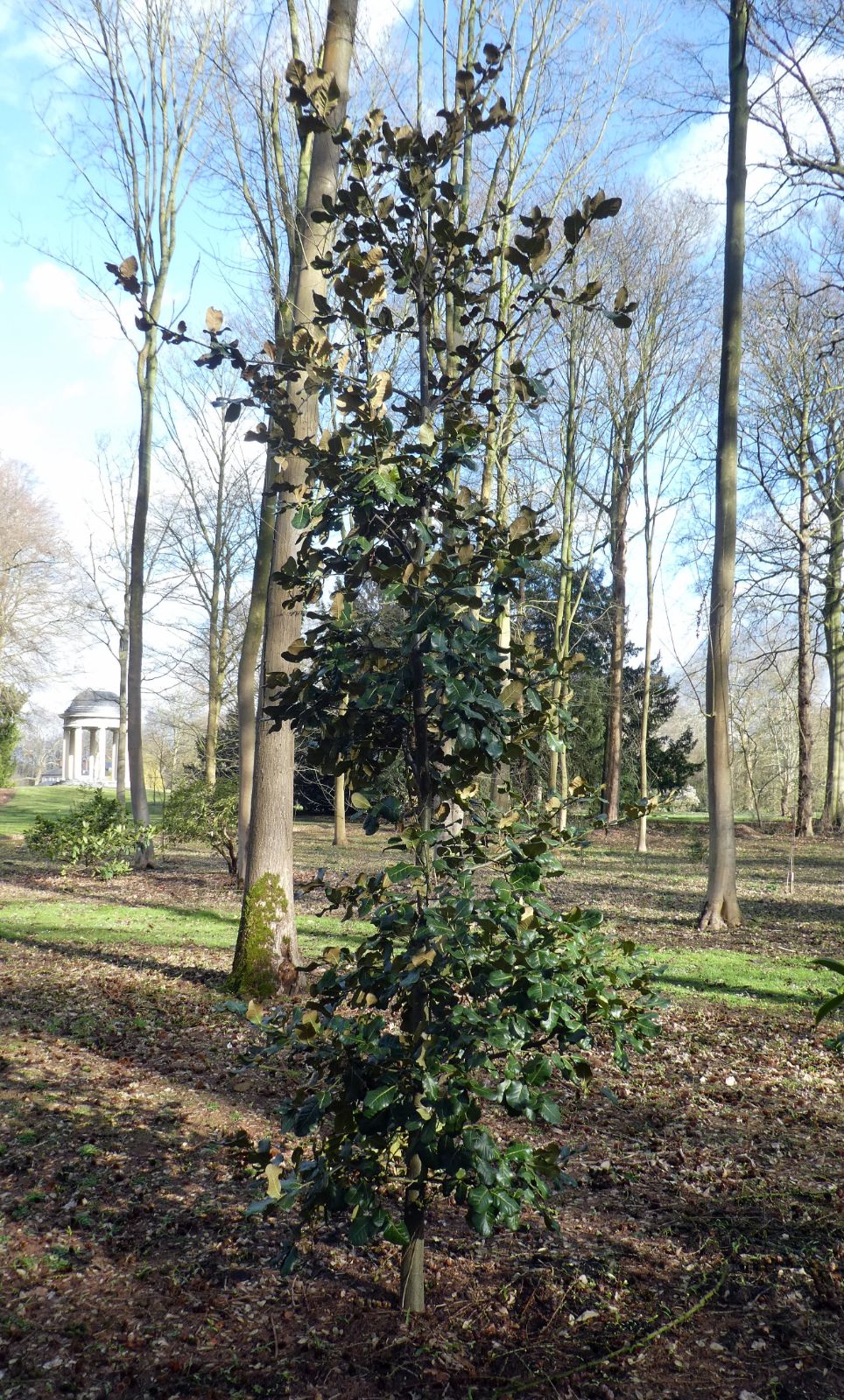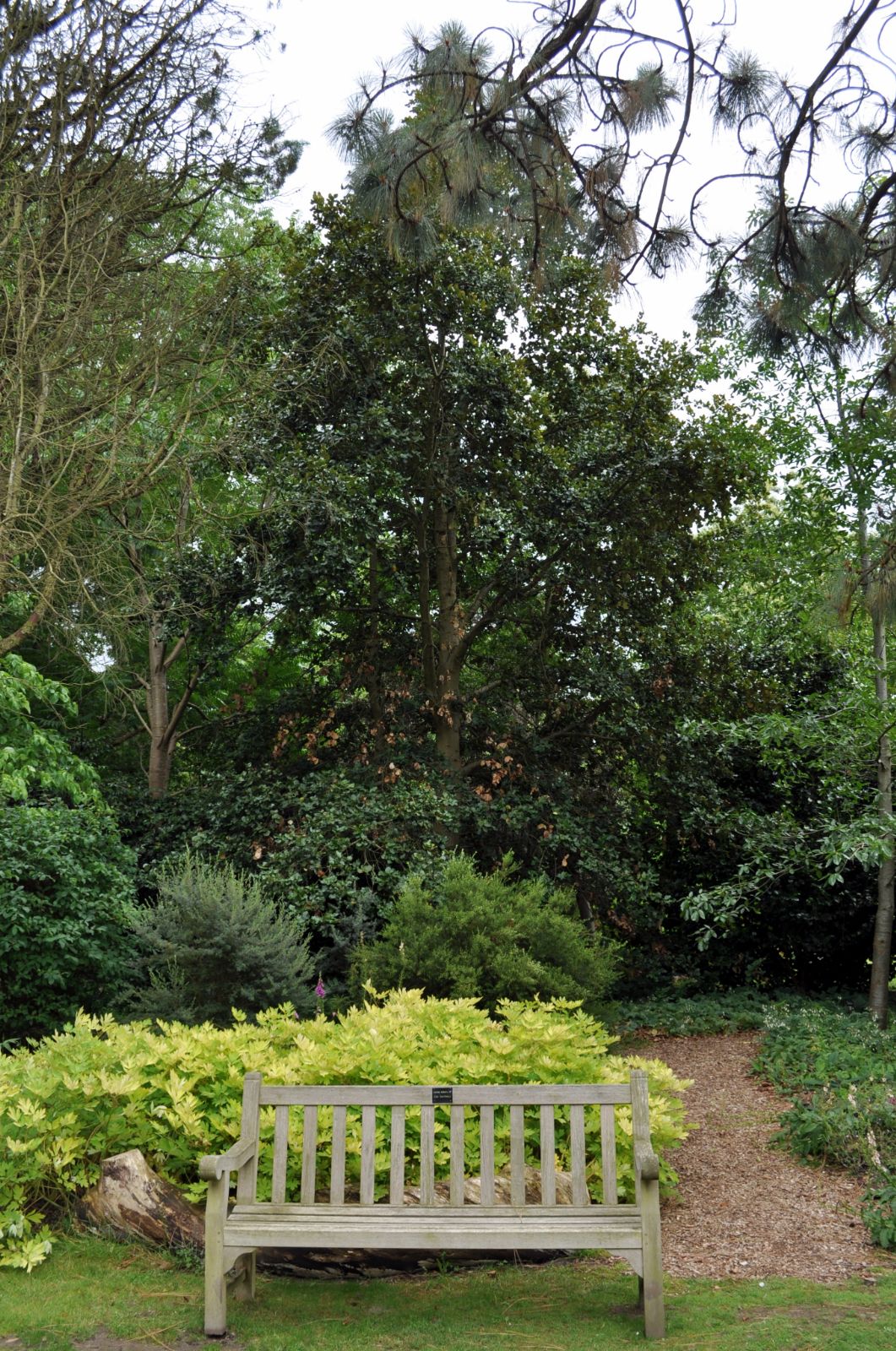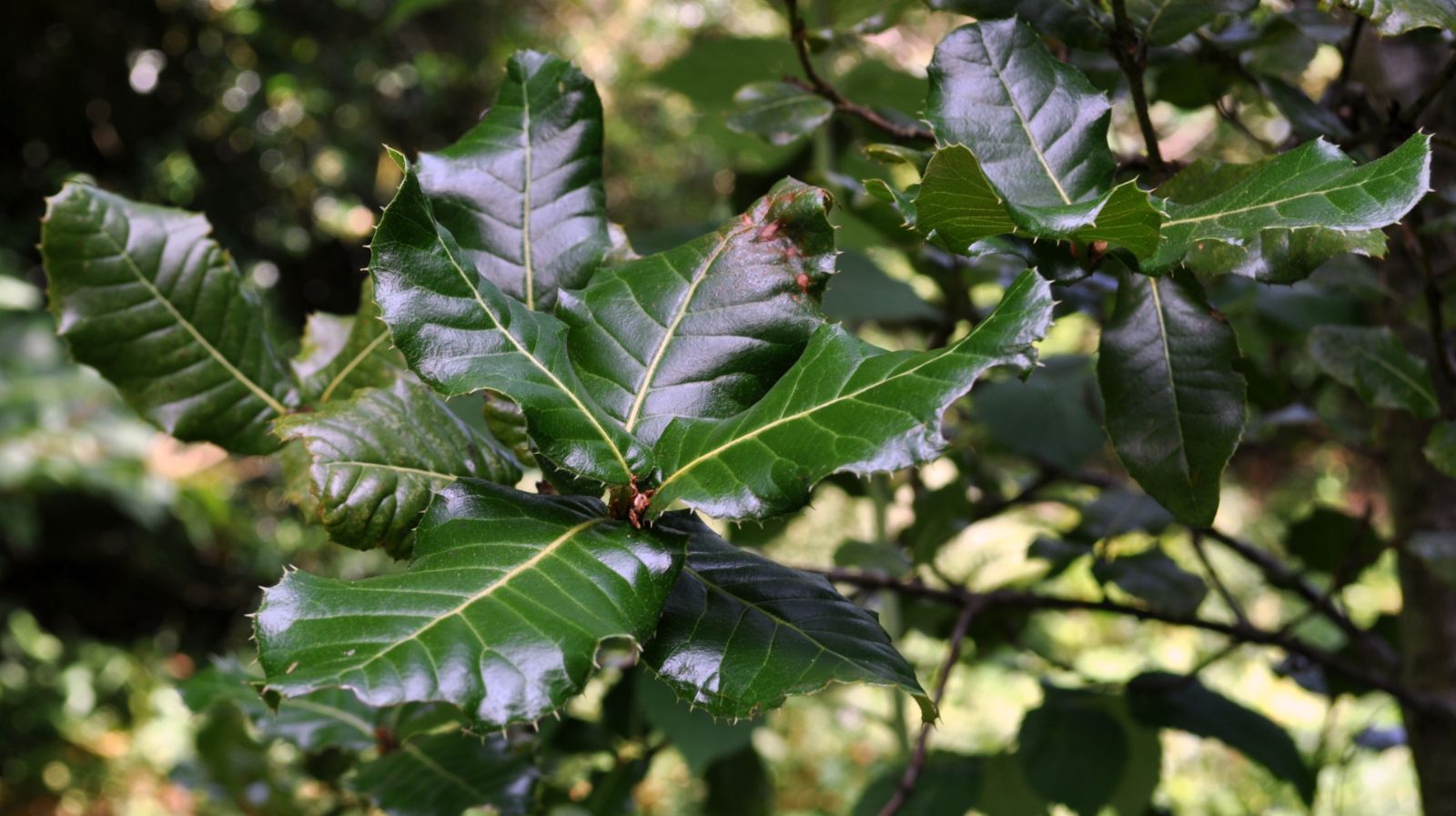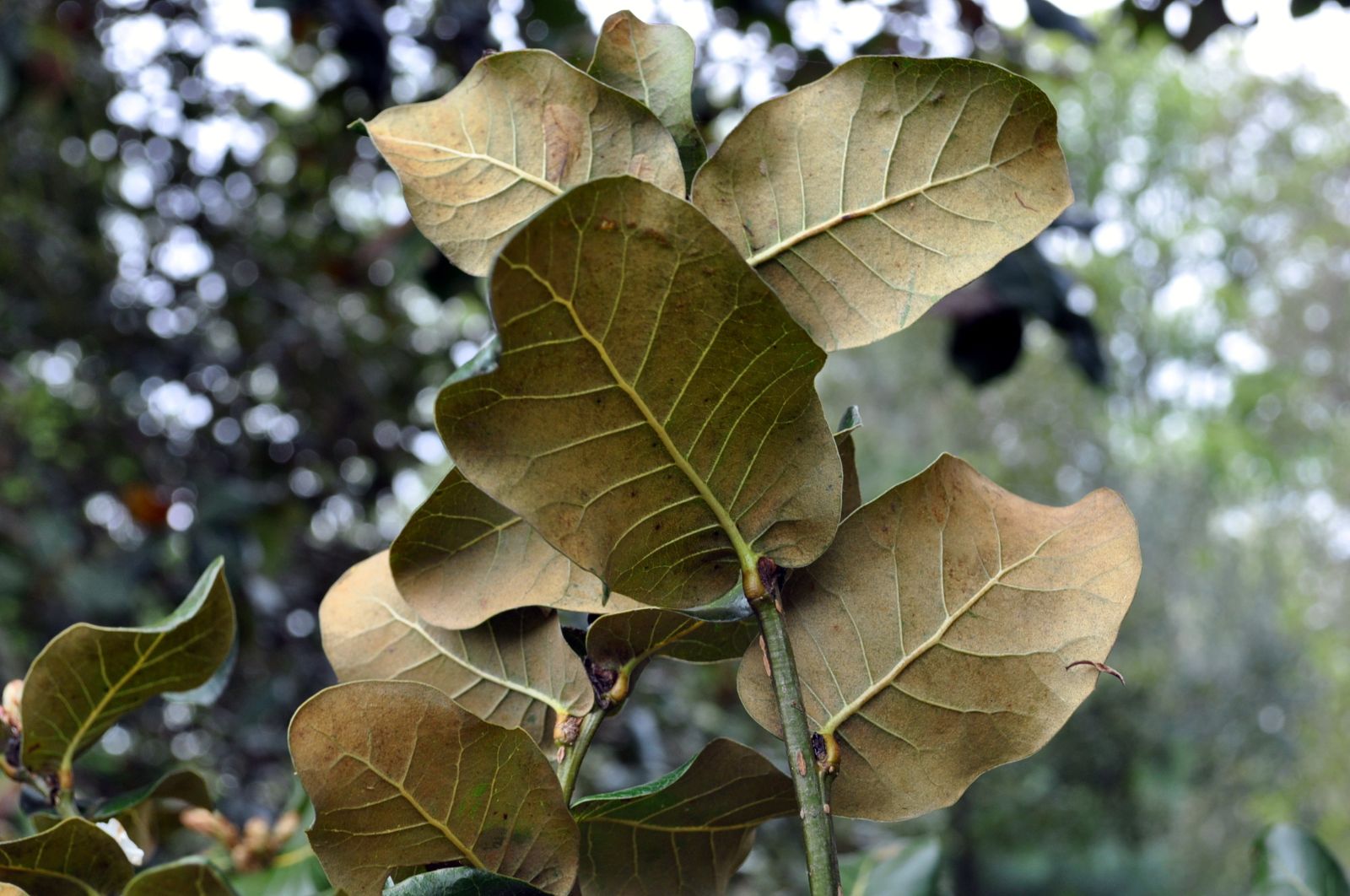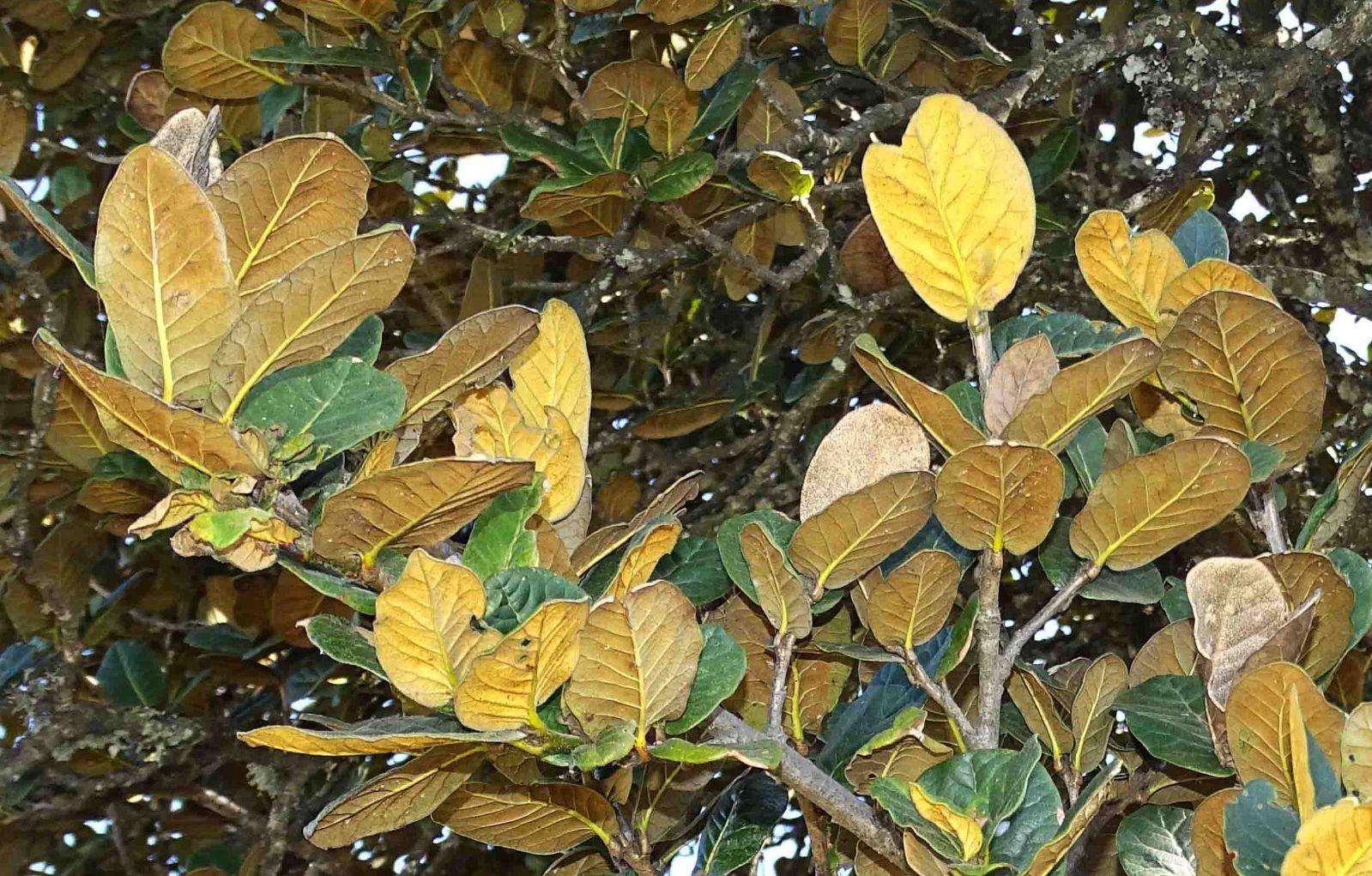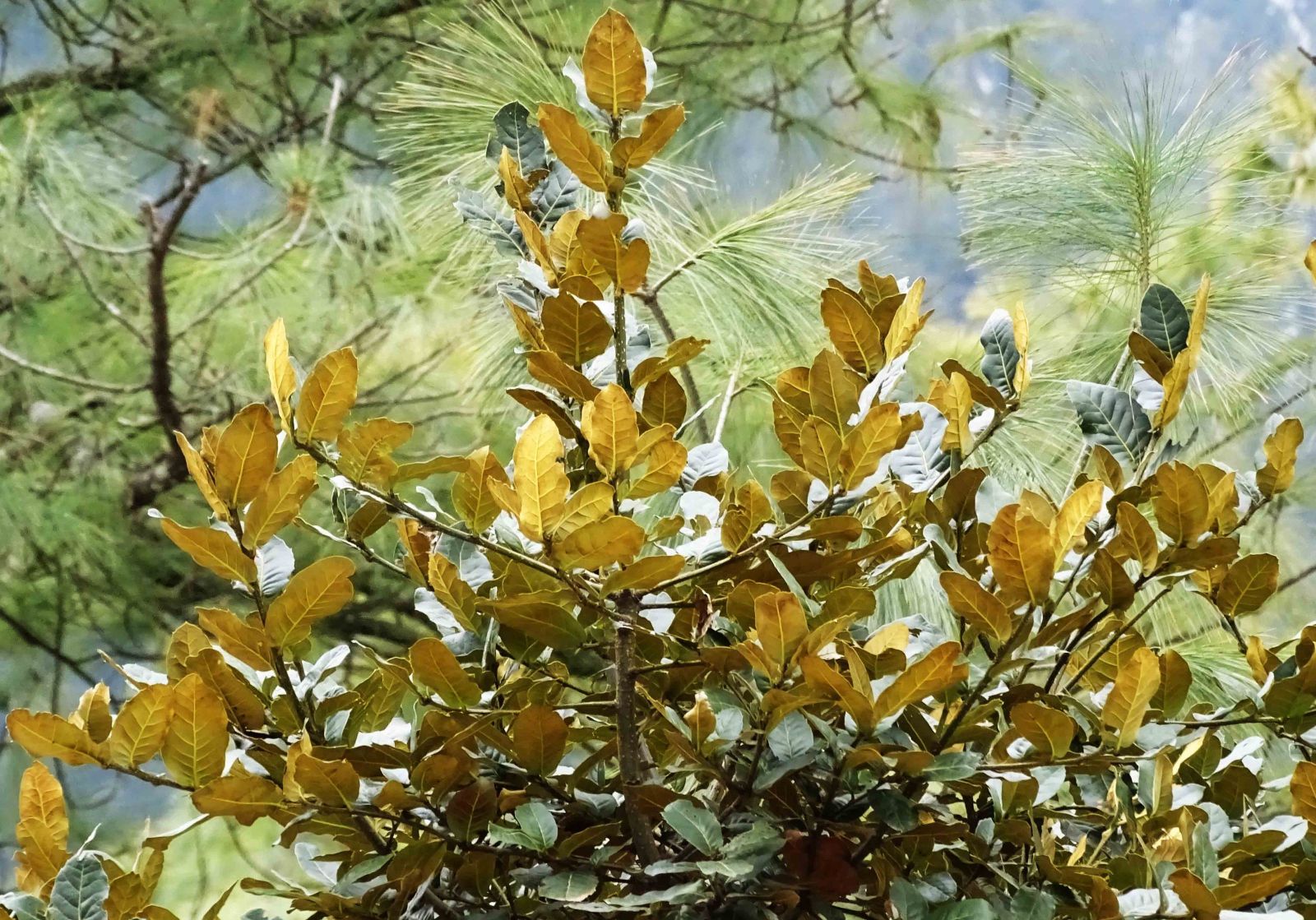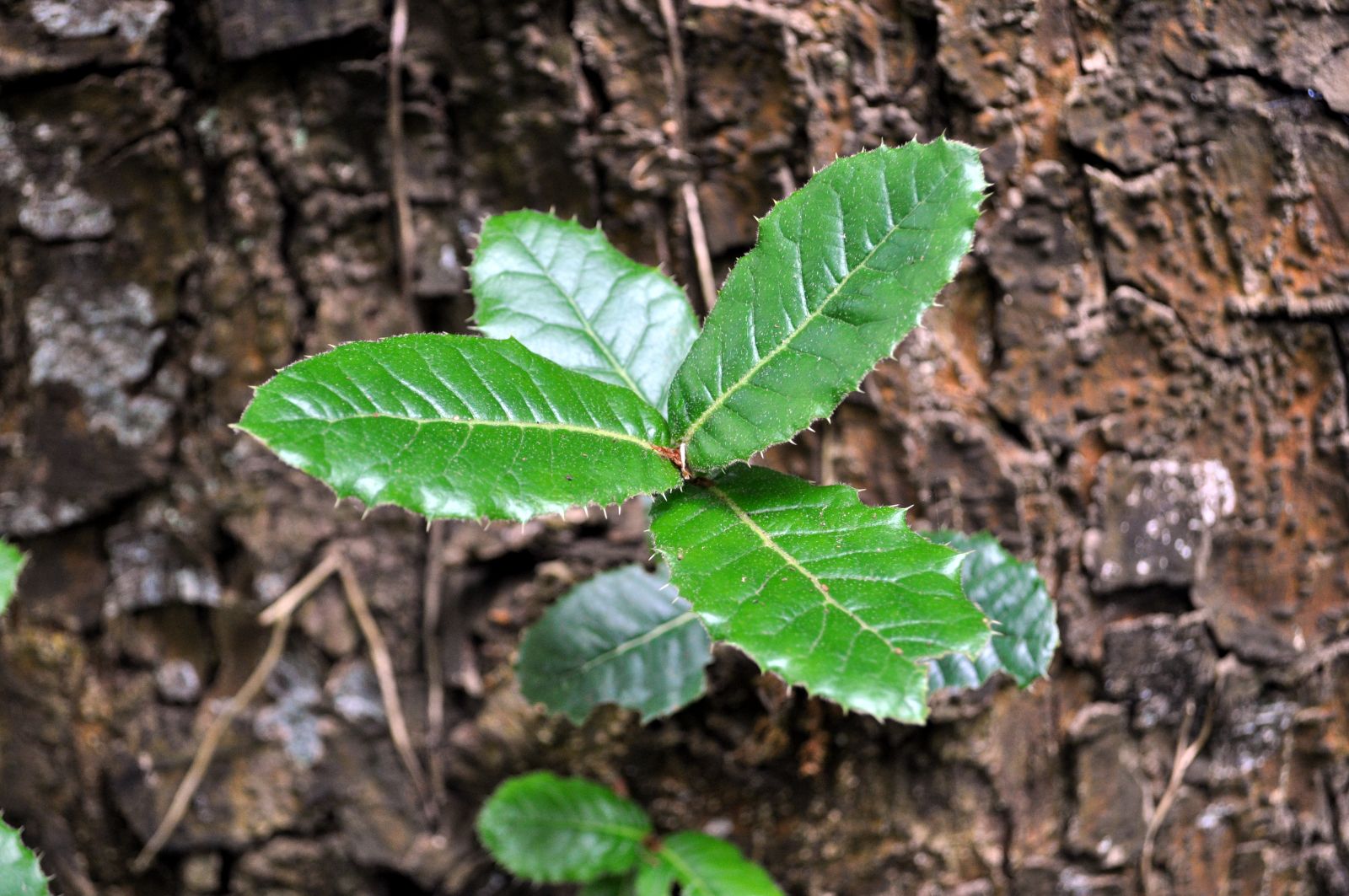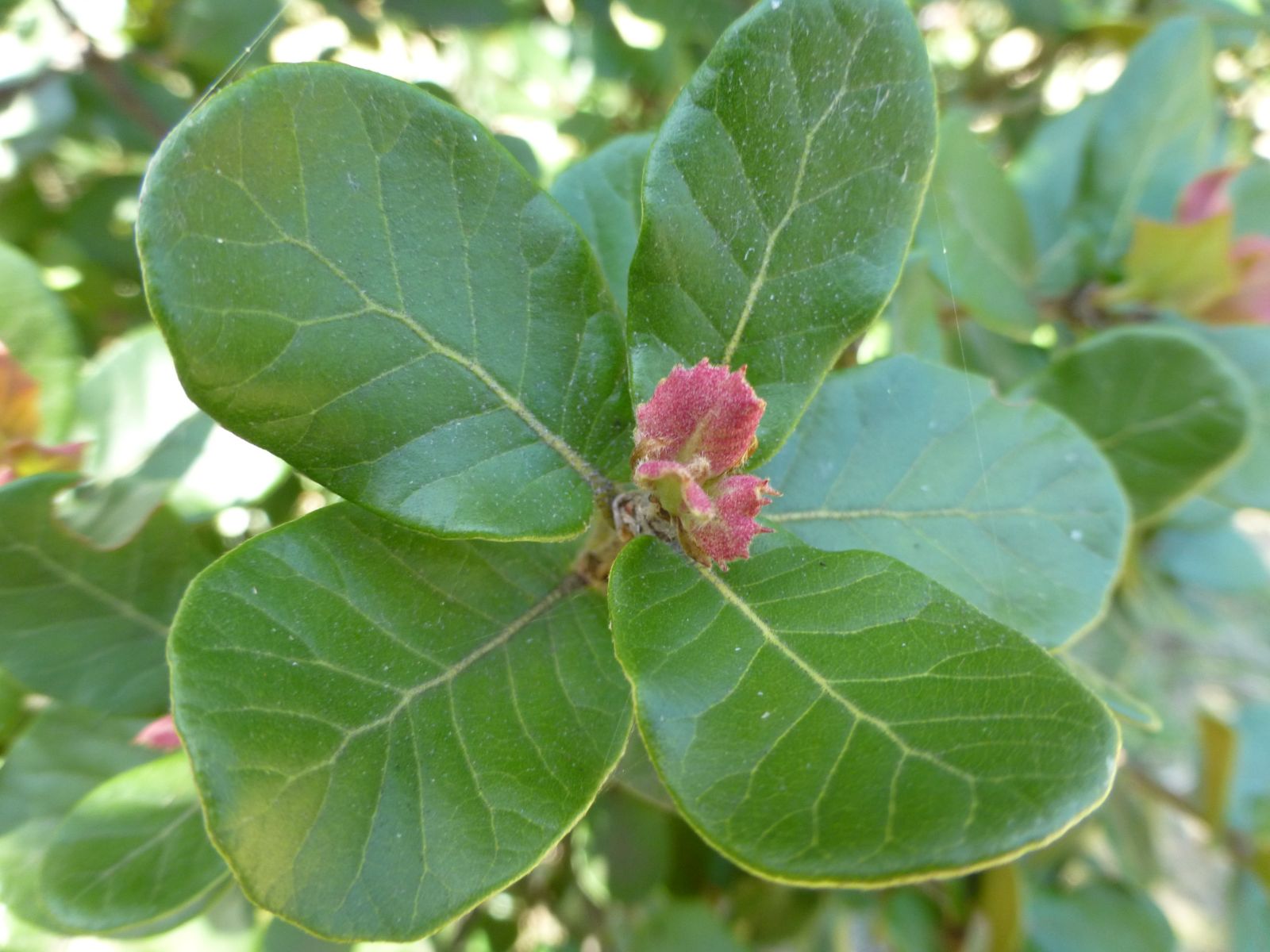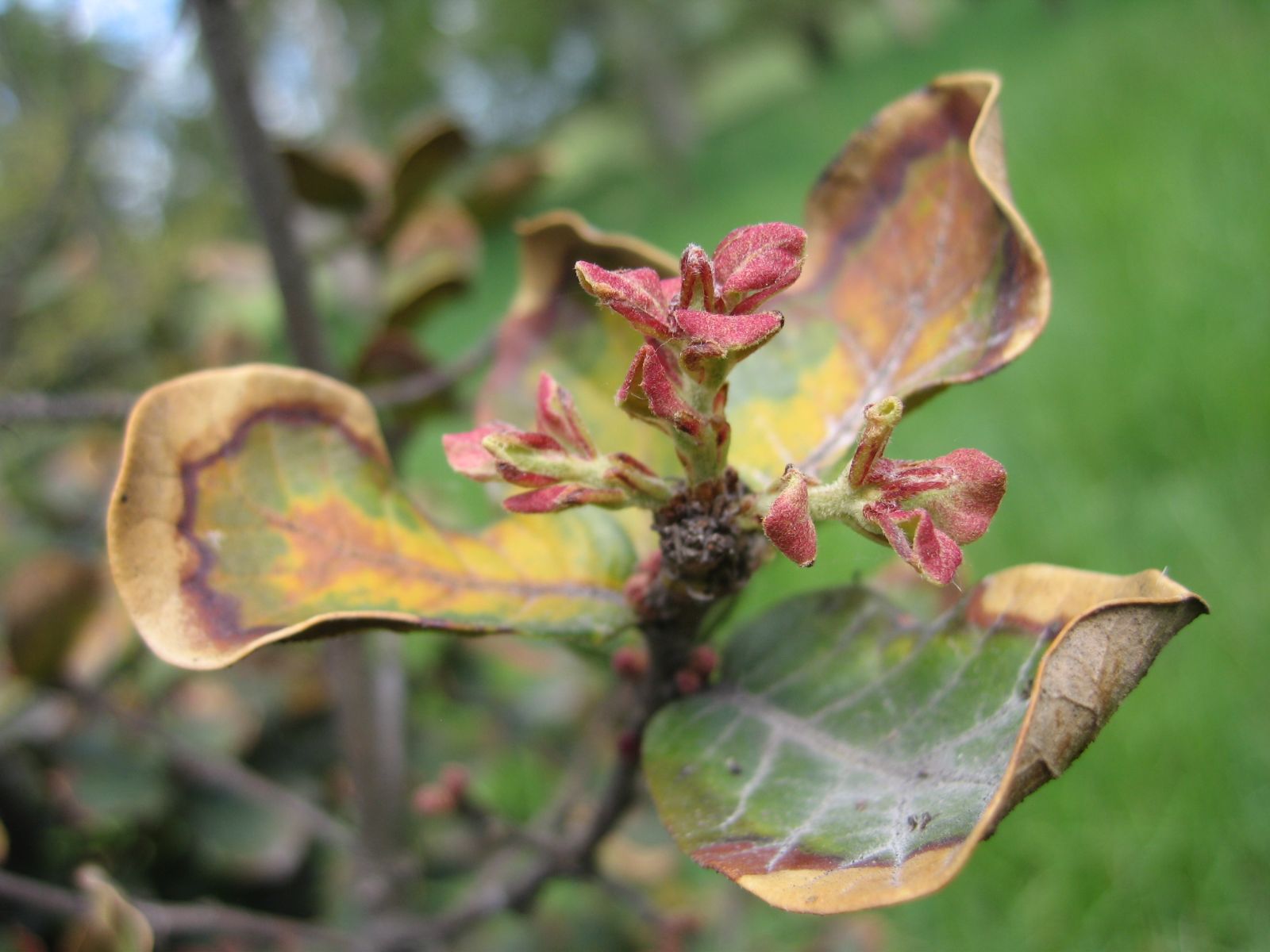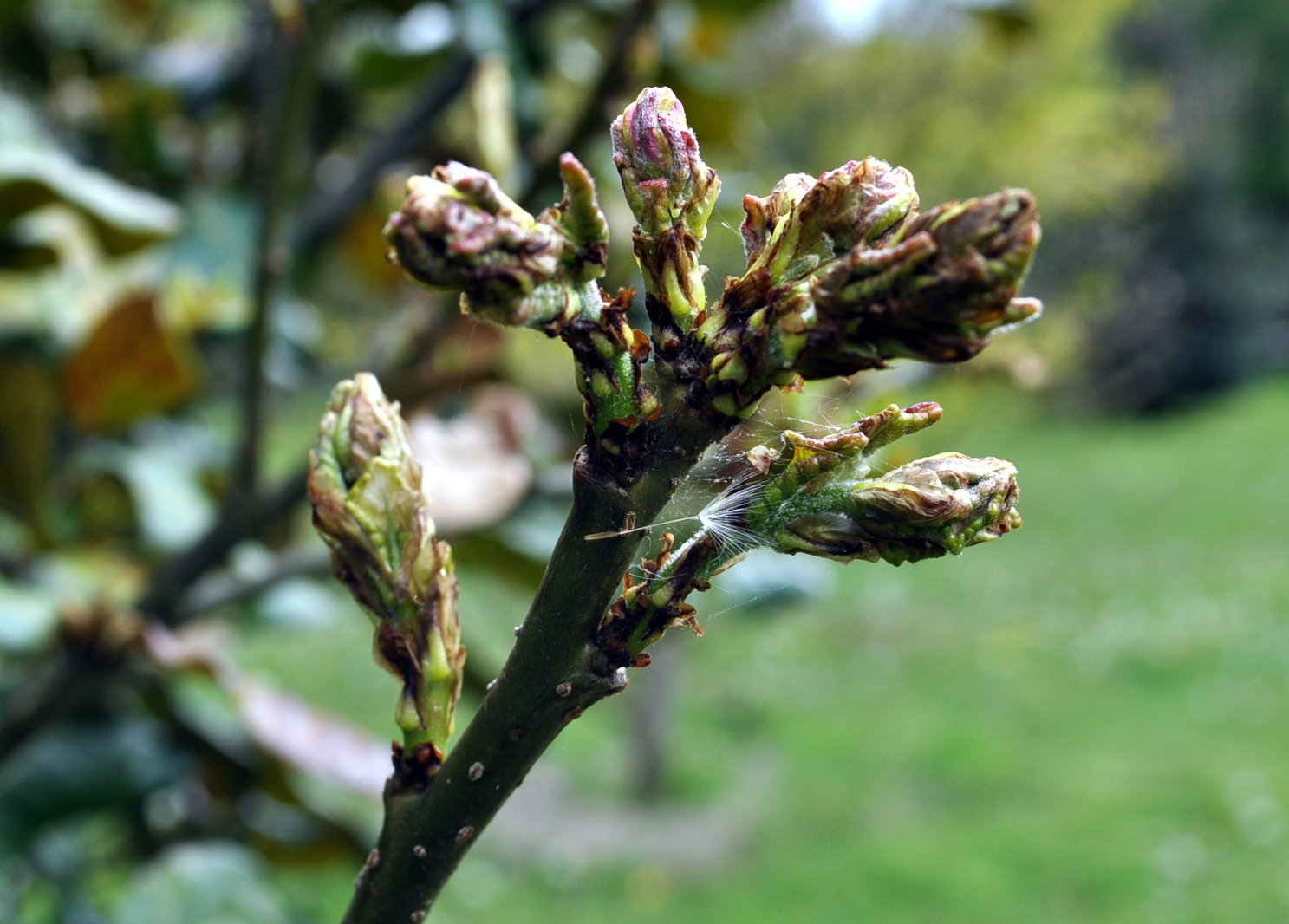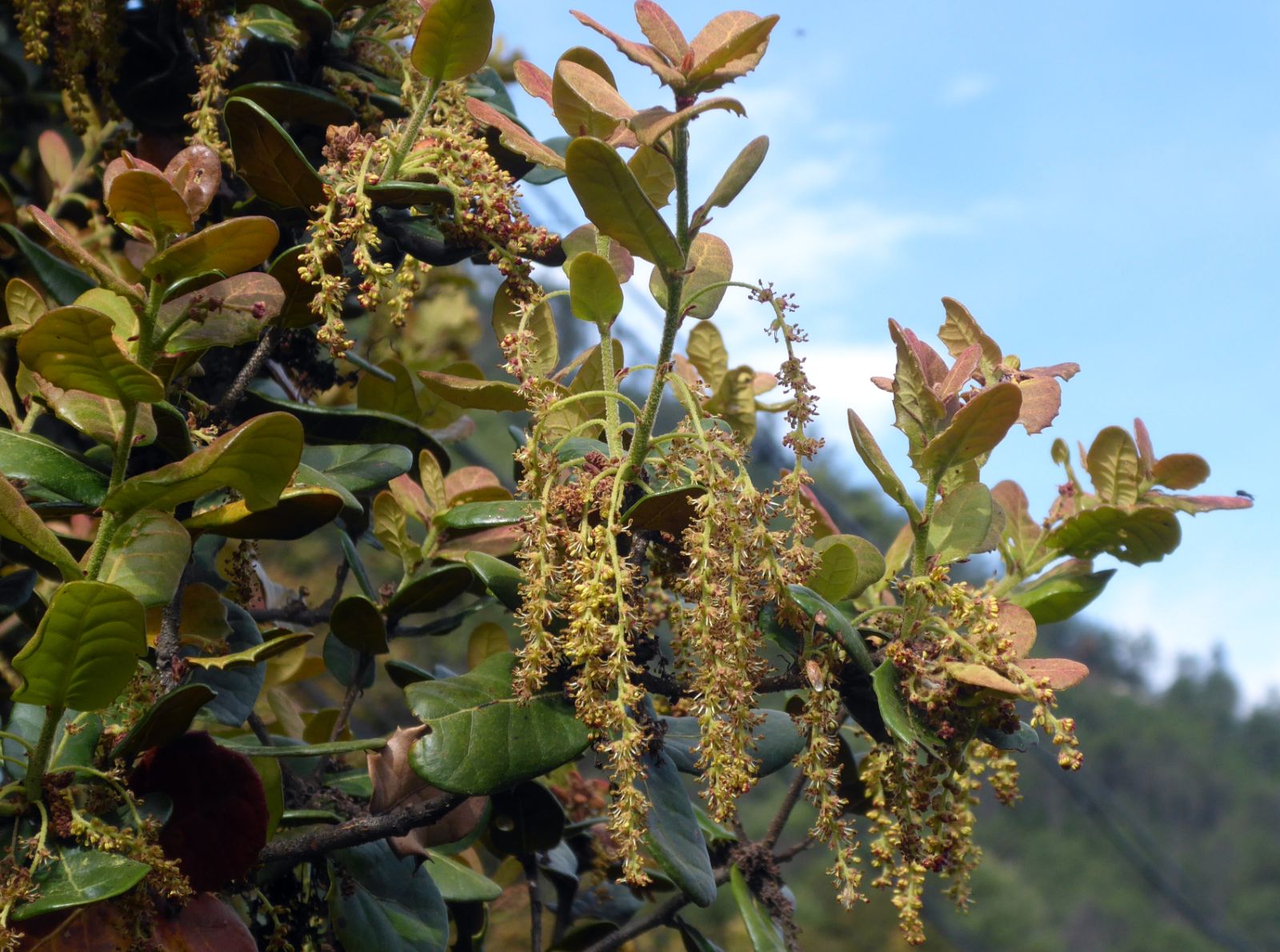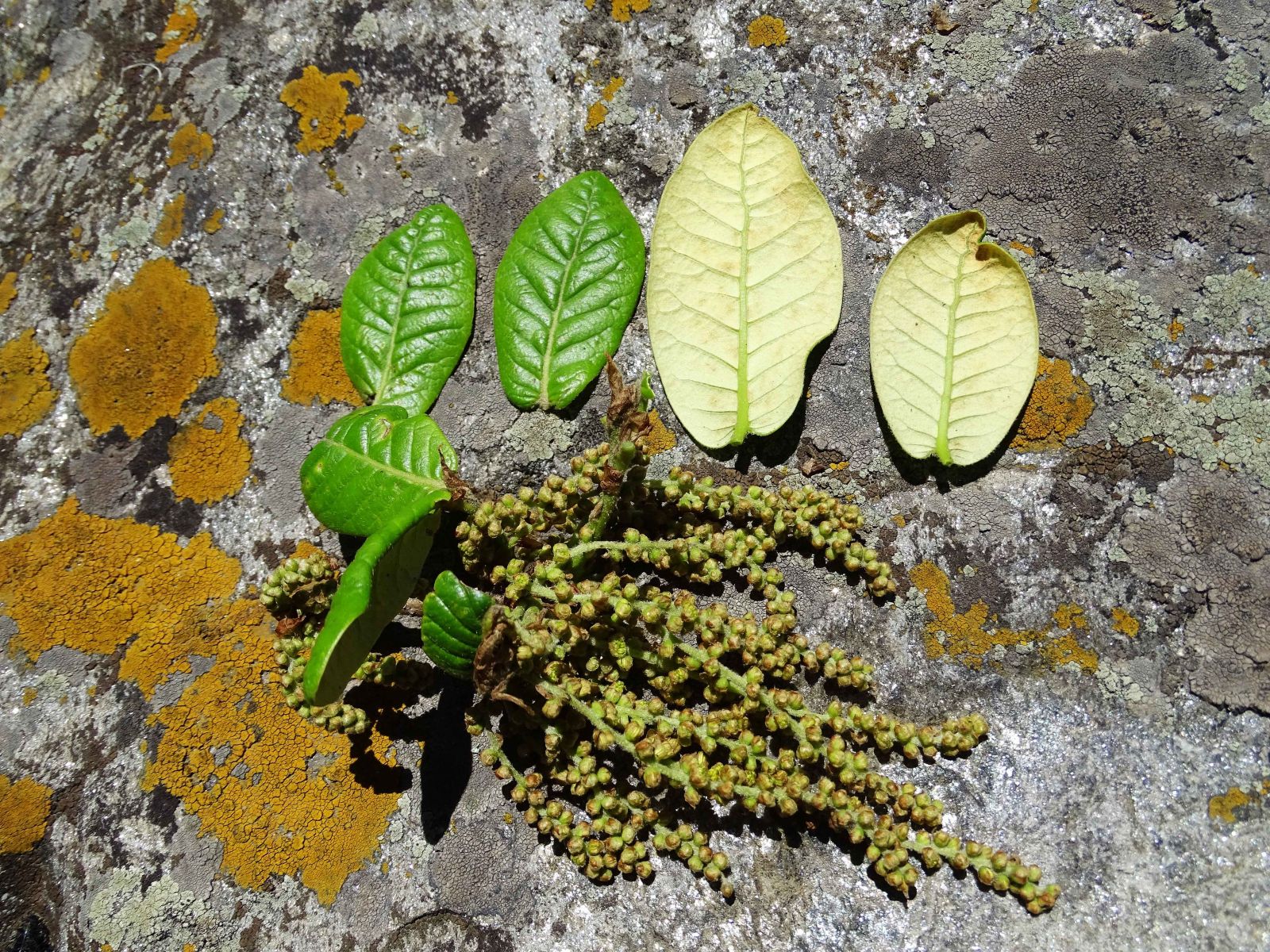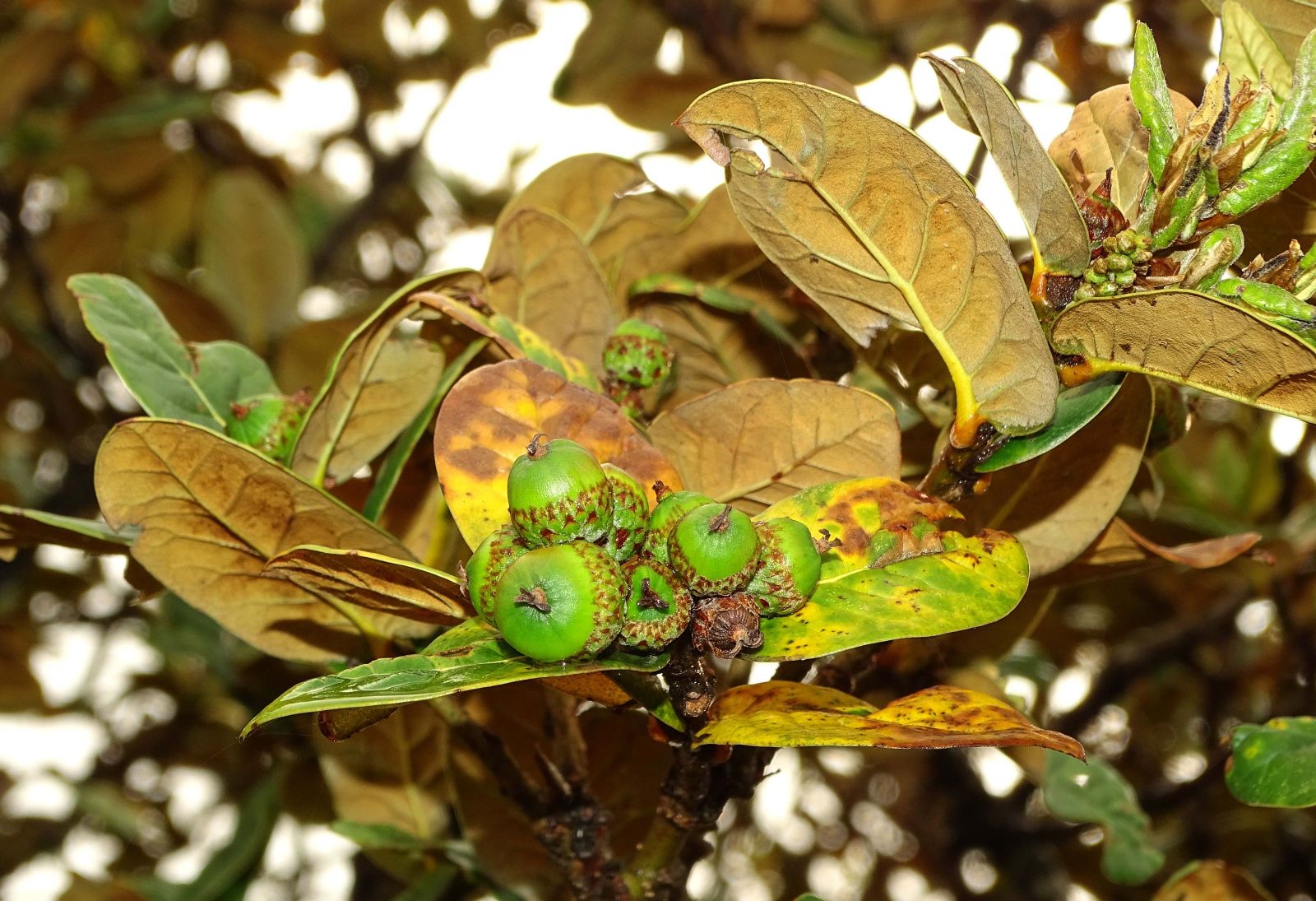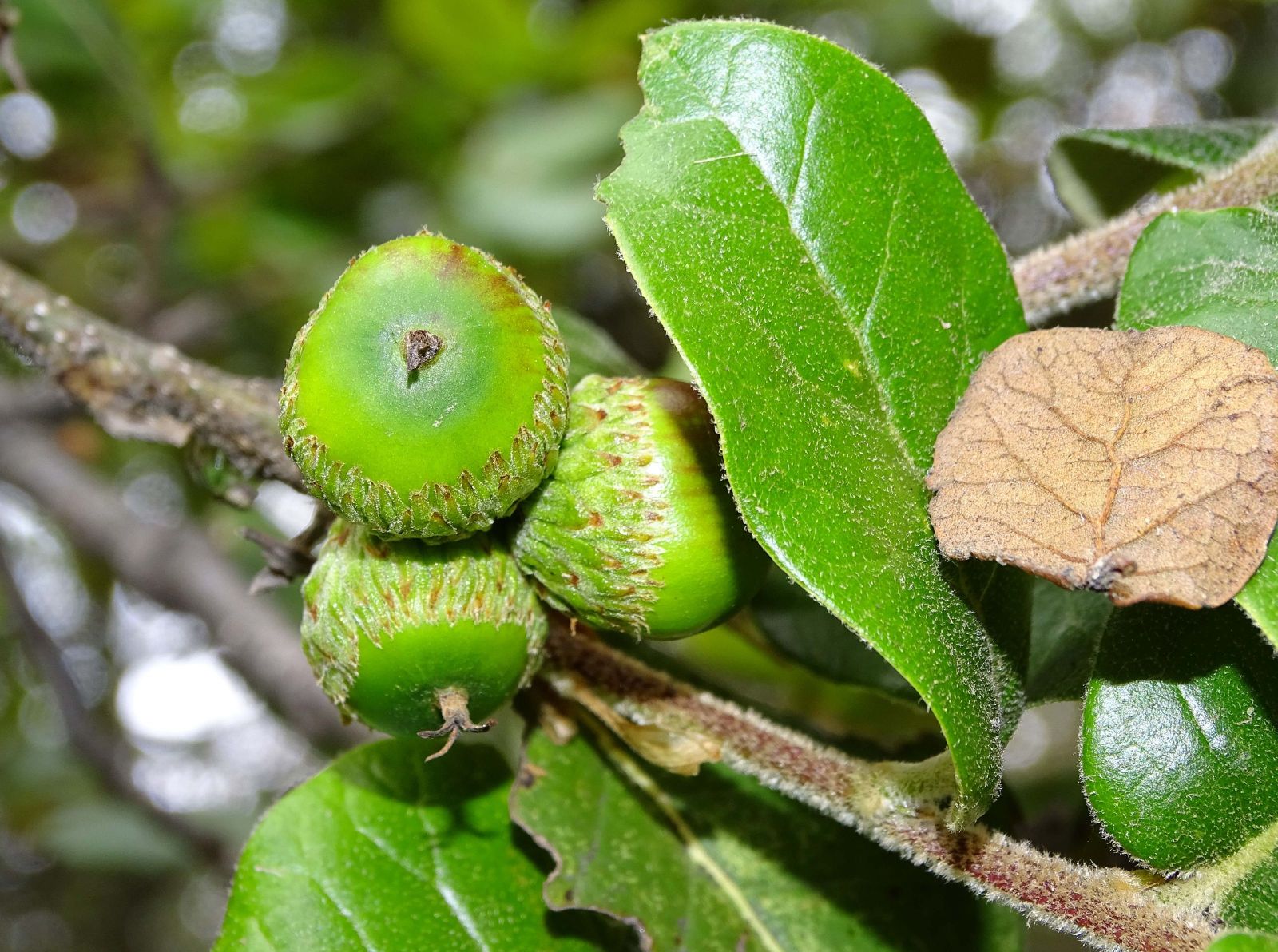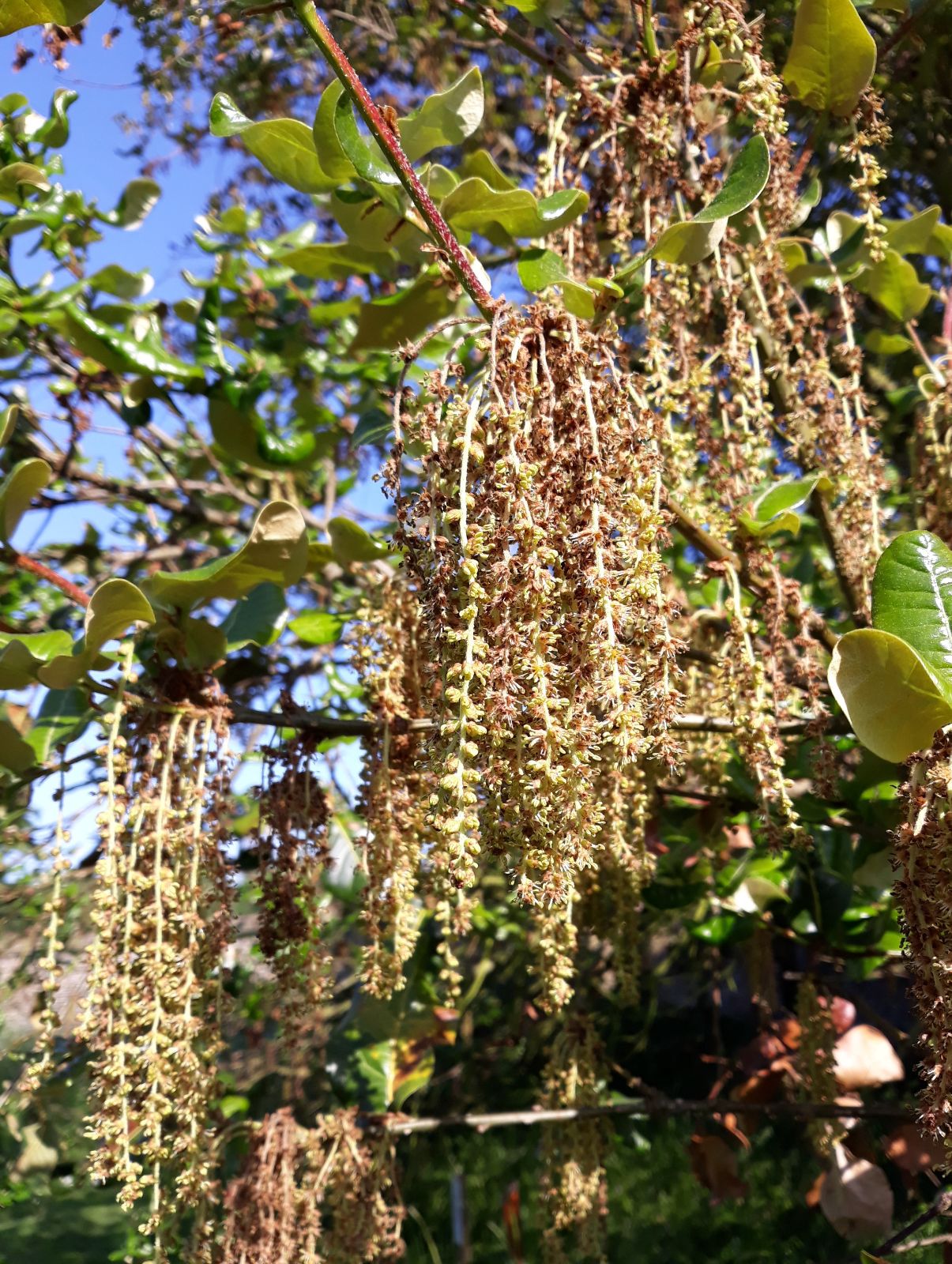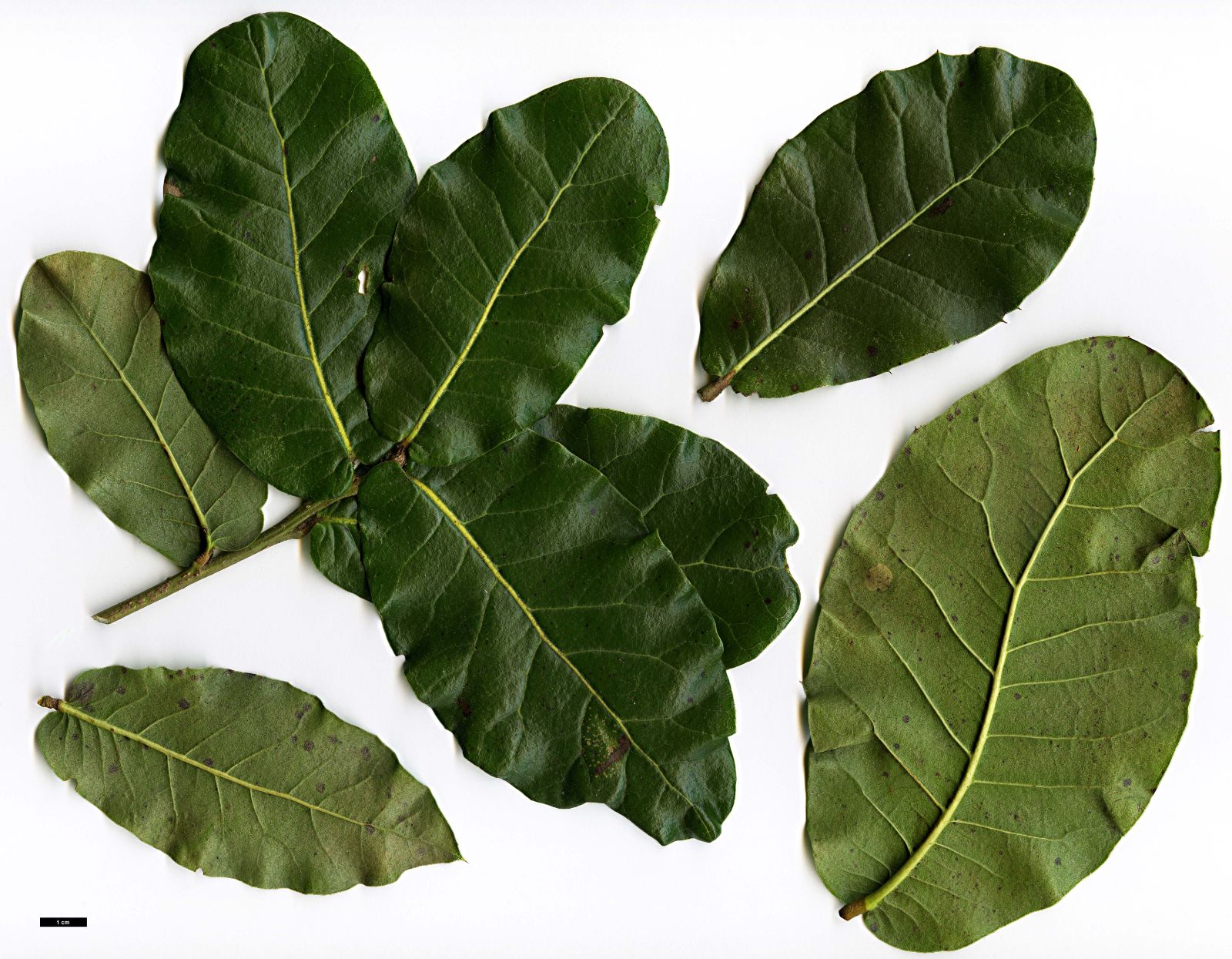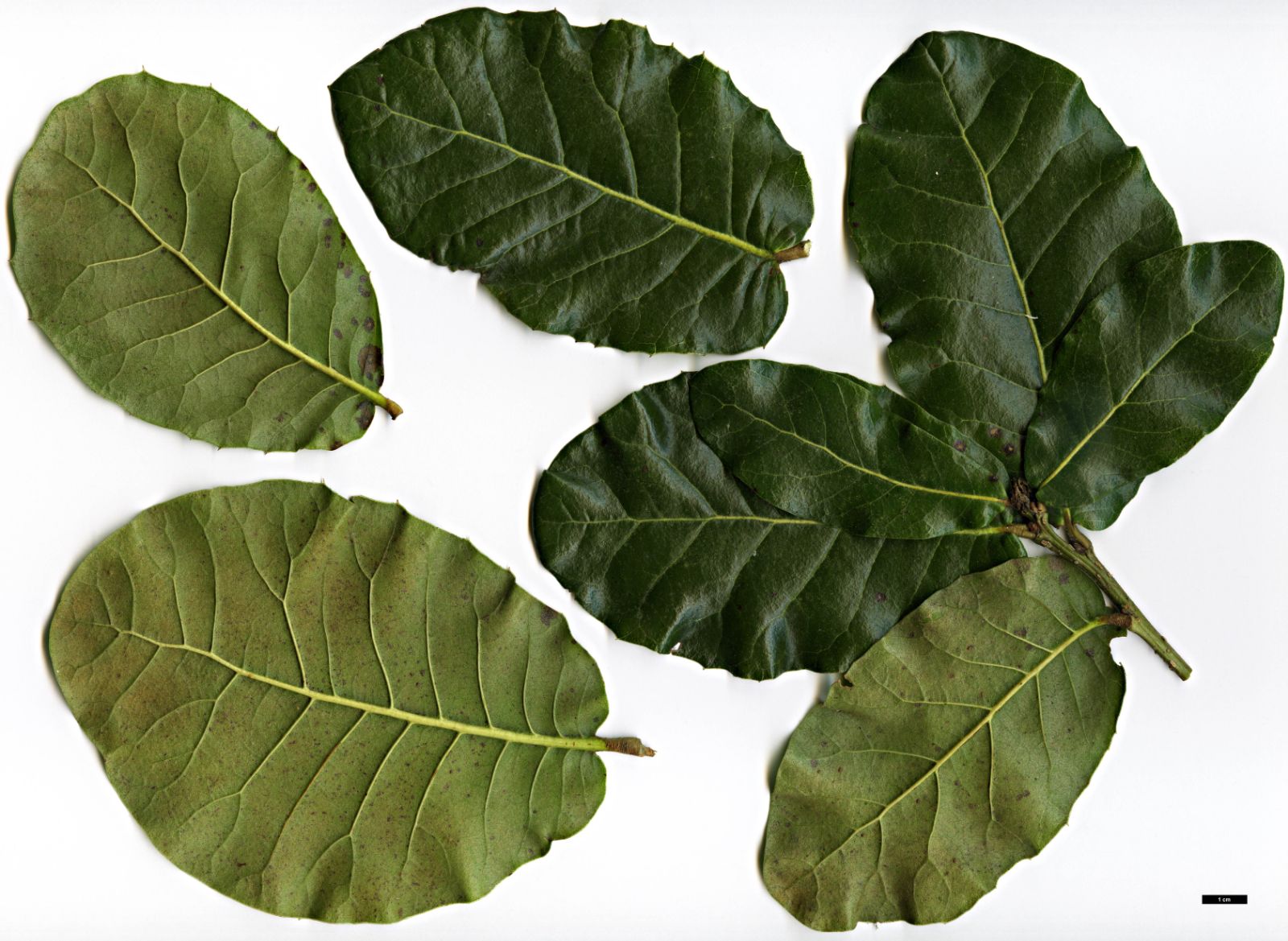Quercus semecarpifolia
Sponsor
Kindly sponsored by
The Trees and Shrubs Online Oak Consortium
Credits
Allen Coombes & Roderick Cameron (2021)
Recommended citation
Coombes, A. & Cameron, R. (2021), 'Quercus semecarpifolia' from the website Trees and Shrubs Online (treesandshrubsonline.
Genus
- Quercus
- Subgen. Cerris, Sect. Ilex
Common Names
- Kharshu
Synonyms
- Quercus obtusiloba D. Don
- Quercus cassura Buch.-Ham. ex D.Don
Other taxa in genus
- Quercus acerifolia
- Quercus acherdophylla
- Quercus acrodonta
- Quercus acuta
- Quercus acutifolia
- Quercus acutissima
- Quercus afares
- Quercus affinis
- Quercus agrifolia
- Quercus alba
- Quercus aliena
- Quercus alnifolia
- Quercus aquifolioides
- Quercus arizonica
- Quercus arkansana
- Quercus aucheri
- Quercus augustini
- Quercus austrina
- Quercus × auzendei
- Quercus baloot
- Quercus bambusifolia
- Quercus baronii
- Quercus bicolor
- Quercus brantii
- Quercus buckleyi
- Quercus canariensis
- Quercus canbyi
- Quercus candicans
- Quercus castanea
- Quercus castaneifolia
- Quercus cerris
- Quercus chenii
- Quercus chrysolepis
- Quercus coccifera
- Quercus cocciferoides
- Quercus coccinea
- Quercus conspersa
- Quercus crassifolia
- Quercus crassipes
- Quercus delavayi
- Quercus dentata
- Quercus deserticola
- Quercus dolicholepis
- Quercus douglasii
- Quercus dumosa
- Quercus durifolia
- Quercus eduardii
- Quercus ellipsoidalis
- Quercus emoryi
- Quercus engelmannii
- Quercus engleriana
- Quercus euboica
- Quercus eugeniifolia
- Quercus fabri
- Quercus faginea
- Quercus falcata
- Quercus floribunda
- Quercus frainetto
- Quercus franchetii
- Quercus fruticosa
- Quercus fusiformis
- Quercus gambelii
- Quercus garryana
- Quercus geminata
- Quercus georgiana
- Quercus germana
- Quercus gilliana
- Quercus gilva
- Quercus glabrescens
- Quercus glauca
- Quercus graciliformis
- Quercus gravesii
- Quercus griffithii
- Quercus grisea
- Quercus guyavifolia
- Quercus hartwissiana
- Quercus hemisphaerica
- Quercus × hispanica
- Quercus hondae
- Quercus hypargyrea
- Quercus hypoleucoides
- Quercus ilex
- Quercus ilicifolia
- Quercus imbricaria
- Quercus incana
- Quercus infectoria
- Quercus insignis
- Quercus ithaburensis
- Quercus kelloggii
- Quercus × kewensis
- Quercus kiukiangensis
- Quercus laceyi
- Quercus laevis
- Quercus lamellosa
- Quercus lanata
- Quercus lancifolia
- Quercus laurifolia
- Quercus laurina
- Quercus × leana
- Quercus leucotrichophora
- Quercus × libanerris
- Quercus libani
- Quercus lobata
- Quercus lobbii
- Quercus lodicosa
- Quercus longinux
- Quercus longispica
- Quercus look
- Quercus × ludoviciana
- Quercus macranthera
- Quercus macrocalyx
- Quercus macrocarpa
- Quercus macrolepis
- Quercus marilandica
- Quercus mexicana
- Quercus michauxii
- Quercus mongolica
- Quercus monimotricha
- Quercus montana
- Quercus morii
- Quercus muehlenbergii
- Quercus myrsinifolia
- Quercus myrtifolia
- Quercus nigra
- Quercus × numidica
- Quercus oblongifolia
- Quercus obtusata
- Quercus oglethorpensis
- Quercus oxyodon
- Quercus pagoda
- Quercus palmeri
- Quercus palustris
- Quercus pannosa
- Quercus parvula
- Quercus petraea
- Quercus phellos
- Quercus phillyreoides
- Quercus planipocula
- Quercus poilanei
- Quercus polymorpha
- Quercus pontica
- Quercus prinoides
- Quercus pubescens
- Quercus pyrenaica
- Quercus rehderiana
- Quercus reticulata
- Quercus robur
- Quercus rotundifolia
- Quercus rubra
- Quercus rugosa
- Quercus rysophylla
- Quercus sadleriana
- Quercus salicina
- Quercus sartorii
- Quercus × schneideri
- Quercus schottkyana
- Quercus senescens
- Quercus serrata
- Quercus sessilifolia
- Quercus setulosa
- Quercus shumardii
- Quercus sinuata
- Quercus spinosa
- Quercus stellata
- Quercus stenophylloides
- Quercus suber
- Quercus subspathulata
- Quercus tarokoensis
- Quercus tatakaensis
- Quercus texana
- Quercus tomentella
- Quercus trojana
- Quercus tungmaiensis
- Quercus turbinella
- Quercus × turneri
- Quercus undulata
- Quercus utahensis
- Quercus utilis
- Quercus uxoris
- Quercus variabilis
- Quercus velutina
- Quercus virginiana
- Quercus vulcanica
- Quercus warburgii
- Quercus wislizenii
- Quercus xalapensis
Trees 20–30 m tall, to 2m dbh or more, evergreen; forms a shrub in adverse conditions. Bark buff brown to dark gray, deeply fissured, forming small, rectangular scales. Young shoots with prominent reddish stellate hairs, glabrescent, becoming dark green, lenticellate; lenticels narrowly rounded. Petiole 2–6 mm, brown tomentose and with stellate hairs, glabrescent; leaf blade elliptic to narrowly so, 5–12 × 3–6.5 cm, abaxially with brown stellate hairs and scurfy powder, adaxially glabrescent or sparsely with stellate hairs, base shallowly cordate or auriculate to rounded, margin entire or (especially on young trees or shoots) with spiniform teeth, apex obtuse, rarely pointed; secondary veins 8–14 on each side of midvein; tertiary veins usually abaxially obscured by indumentum. Young leaves in dense rosettes; leaves emerge with tomentum on both sides, sparse above. Infructescence with 1 or 2 cupules, 2–7 cm, glabrous. Cupule shallowly bowl-shaped to discoid, 5–8 mm × 1.5–2.5 cm, at maturity inside wall usually in contact with nut only in region of scar, inside with a thick pale grayish brown indumentum; scales appressed, lanceolate, 2–3 mm, grayish pubescent, apex brown, rounded or acute. Nut purple-brown or blackish brown, subglobose, 1–2.5 cm long × 1.2–3 cm in diameter, glabrous or apex glabrescent; stalk 1–4 cm long; scar c. 6 mm in diameter, flat or slightly raised; stylopodium c. 1 mm in diameter. Acorns ripen in second year. (Huang et al.1999; le Hardÿ de Beaulieu & Lamant 2010).
Distribution Afghanistan Bhutan Myanmar China S Xizang (Tibet) India Himachal Pradesh Nepal Pakistan Thailand
Habitat Montane forests; 2600–4000 m asl, in association with Abies gamblei, A. pindrow, Juniperus squamata, Rhododendron arboreum, R. lepidotum, R. campanulatum, Ilex dipyrena, Viburnum cotinifolium, Taxus sp., Euonymus fimbriatus, Rhamnus purpureus, Meliosma dilleniifolia, and sometimes Tsuga dumosa and Cupressus torulosa.
USDA Hardiness Zone 8
Conservation status Least concern (LC)
Quercus semecarpifolia grows in mountain climates (preferring north-facing slopes), where snow is more frequent than rain. It is often found at the treeline, except in places where it is replaced by Betula utilis. It grows both on rich, deep soils above limestone bedrock, and on poor, rocky terrain on ridges and steep slopes. It appears to tolerate acidic soils. Like Q. floribunda, its powerful roots make it resistant to wind, though its branches sometimes break under the weight of snow. Worth noting is the ornamental value of the golden catkins in spring, 6–12 cm long. The evergreen foliage, forming rosettes when young and with rust-coloured undersides, make this one of the most beautiful Asian oaks.
In England it appears to suffer in temperatures below –10 °C. In habitat, it is shielded from the rigours of winter by snow. It is probable that a conjunction of frigid temperatures and excessive rain causes it to fail in European gardens. Good drainage, a sunny location, and scarce winter rain should allow this species to thrive in cultivation (le Hardÿ de Beaulieu & Lamant 2010). Under natural conditions, germination takes place early in the rainy season. The nuts fall as soon as they ripen and germinate immediately, some even showing signs of germination before falling (Orwa et al. 2009).
Although described by Sir James Smith in 1814, it was probably not introduced to the UK till much later. Jovey Carlyon of Tregrehan, Cornwall, received seed from India in 1894 and three trees grown from them still stand, the tallest measuring 20 m (2014) (Chassé 2012; Tree Register 2020). In 1900, J.S. Gamble of East Liss, Hampshire, who had been a forester in India, received acorns from Chakatra in the N.W. Himalaya, from which two seedlings were raised which by 1909 were 3 and 5 m high respectively (Bean 1976). Of these one still exists in a garden on the Highfield Estate and measures 15 m × 0.85 m (2009). James Russell recorded in his notes (Yorkshire Arboretum records) ‘Harold Hillier says builders were about to fell these. He immediately obtained a preservation order and saved the remaining tree and grafted some scions of which the tree in the [Yorkshire] arboretum is one. This was cut back by the 81/82 winter but not by much and is now (1982) 6’ high. It was by pure chance that Harold happened to be driving through Liss at the critical moment. It too was badly cut by the 81/82 winter.’ The Yorkshire Arboretum specimen, perhaps the largest in northern England, was also hard-hit in the cold winter of 2010 and remained almost leafless until 2013, when it recovered and re-clad itself (J. Grimshaw pers. comm. 2021). The current UK champion is at Borde Hill, measuring 21 m × 38 cm dbh (2015) (Tree Register 2020). A tree given by Keith Rushforth is at Thenford, Northamptonshire, and three plants grown from seed collected by Christina Noble from 2150 m in Himachal Pradesh, India, in 2004 are at the Howick Arboretum. At Sir Harold Hillier Gardens it has reached 17.1 m × 49.7 cm dbh in 2020 (B. Clarke pers. comm.).
The specific epithet, often mis-spelt ‘semicarpifolia’, means ‘with leaves like Semecarpus’. In his original description, Smith remarked: ‘The aspect of the adult leaves is much like that of Semecarpus anacardium’ a species with fleshy fruits that yield a juice used as marking-ink and for decorating cloth. The name semecarpus derives from Ancient Greek σημεῖον (sēmeîon, ‘a mark’) and καρπὸν (karpon, ‘a fruit’).

